FEATURES
What goes up must come down
Chain reaction – chemical recycling for soft plastics

Fasten your belts
Liberating recycling

FEATURES
What goes up must come down
Chain reaction – chemical recycling for soft plastics

Fasten your belts
Liberating recycling
Blue Phoenix’s Ian Lynass leads a unified approach to Australia’s incinerator bottom ash market.
PROUDLY SUPPORTED BY:





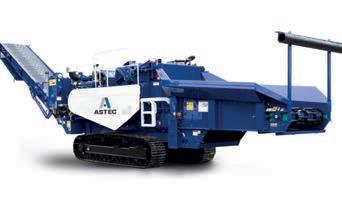




Blue Phoenix’s Ian Lynass leads an industry charge to ensure a unified approach to Australia’s incinerator bottom ash market.
“THIS IS AN EXCITING TIME TO REALLY TAP INTO RECYCLED MATERIALS THAT WE DIDN’T EVEN KNOW WERE THERE.”
33
GHD
46
Find out why Liebherr material handlers are on the wish list for refuse yard operators.
48
City
The Peterson 2710D makes a name for itself in Australia’s organics and forestry recycling industries.
The Australasian Waste and Recycling Expo 2023 Summit will be a reality check for Australia’s national resource recovery system.

52
A Lake Macquarie initiative good enough to bottle.
55 PRODUCT SPOTLIGHT
57 LAST WORD
Plastics are one of the most difficult waste streams to recycle. Apart for the individual make-up of seven types of plastics, product design, sorting and a combination of additives add to the complexities.
But while there are many hurdles to plastic recycling, almost everyone involved in resource recovery agrees on one thing – a solution needs to be found.
Global production of plastic increased from two million tonnes in 1950 to 380 million tonnes in 2018, and that growth is predicted to continue. The environmental damage caused is well documented, but recent studies have revealed the alarming extent of plastic pollution.
A University of the Sunshine Coast study, published in the science journal Frontiers in Sustainability, is the first comprehensive assessment to quantify and map the magnitude and risks of plastic pollution within the Galápagos archipelago, home to rare and endangered species.
Lead author Juan Pablo Muñoz-Pérez, confirmed 52 species, 20 endemic to the region, are being impacted by plastic debris. About 80 scientists collected photographic and video evidence of Galápagos wildlife interacting with rubbish for the study.
In Australia, government, researchers, manufacturers, and environmental groups are all working toward a circular economy in which plastic never becomes waste.
According to Simon Mathewson, the Commercial Lead in Australia and New Zealand for Advanced Plastic Recycling at Licella, it will take a collective approach to be successful but the nation has an unprecedented opportunity to support local technology that reduces emissions and keeps more plastic in circulation.

“We need consumers thinking about what’s possible and what’s not. We need government asking, ‘What do we expect?’ And we need industry to be open to new technology and asking how do we adapt to that? Aligning those three things takes bold, brave, and collective action,” he says.
As this month’s edition of Waste Management Review highlights, there are many people willing to be brave and bring Australia closer to its goal. We take a look at manufacturers introducing the latest technology, packaging companies taking ownership of their products and design, and a city council taking matters into its own hands to secure a regional solution.
CHIEF OPERATING OFFICER
Christine Clancy christine.clancy@primecreative.com.au
GROUP MANAGING EDITOR
Sarah Baker sarah.baker@primecreative.com.au
MANAGING EDITOR
Mike Wheeler mike.wheeler@primecreative.com.au
EDITOR
Lisa Korycki lisa.korycki@primecreative.com.au
JOURNALIST
Shannon Paten shannon.paten@primecreative.com.au
DESIGN PRODUCTION MANAGER
Michelle Weston michelle.weston@primecreative.com.au
ART DIRECTOR
Blake Storey blake.storey@primecreative.com.au
DESIGN
Louis Romero, Kerry Pert
BRAND MANAGER
Chelsea Daniel chelsea.daniel@primecreative.com.au
p: +61 425 699 878
CLIENT SUCCESS MANAGER

Justine Nardone justine.nardone@primecreative.com.au
HEAD OFFICE
Prime Creative Pty Ltd

379 Docklands Drive Docklands VIC 3008 Australia p: +61 3 9690 8766 f: +61 3 9682 0044 enquiries@primecreative.com.au www.wastemanagementreview.com.au
SUBSCRIPTIONS
+61 3 9690 8766 subscriptions@primecreative.com.au
Waste Management Review is available by subscription from the publisher. The rights of refusal are reserved by the publisher
ARTICLES
All articles submitted for publication become the property of the publisher. The Editor reserves the right to adjust any article to conform with the magazine format.
COPYRIGHT
Waste Management Review is owned by Prime Creative Media and published by John Murphy.
All material in Waste Management Review is copyright and no part may be reproduced or copied in any form or by any means (graphic, electronic or mechanical including information and retrieval systems) without written permission of the publisher. The Editor welcomes contributions but reserves the right to accept or reject any material. While every effort has been made to ensure the accuracy of information, Prime Creative Media will not accept responsibility for errors or omissions or for any consequences arising from reliance on information published. The opinions expressed in Waste Management Review are not necessarily the opinions of, or endorsed by the publisher unless otherwise stated.
Lisa Korycki
Regional Queensland is suffering with illegal tyre dumping and dangerous tyre stockpiles representing a missed opportunity, according to Tyre Stewardship Australia.
By recovering resources such as steel and rubber from end-of-life tyres, Queensland can build highperformance roads and generate commercial markets that promote local jobs and manufacturing across the state.

“Putting crumb rubber in roads is a winning circular economy formula already happening across Australia and around the world,” said Lina Goodman, Chief Executive Officer of Tyre Stewardship Australia.
“It’s time for Queensland state and local government to start mandating their roads be made using Australian crumb rubber. By not mandating locally available rubber resources for roads, Queensland risks letting its road sector fall behind on industry best practice.”
Across Queensland about 112,000 tonnes of tyres reach their end-oflife annually, including tyres from passenger cars, trucks, and offthe-road vehicles such as those used in mines, agriculture, and civil construction sectors. Of these, about 60 per cent are presently collected and processed by tyre facilities concentrated in the state’s southeast region (in metropolitan and urban areas).
In regional and remote areas across North and Far North Queensland, it’s a different story. Recovery rates are presented with obstacles of
low quantities and large distances engendering rates of recovery lower than other parts of the state and providing a perfect storm for illegal stockpiling and dumping.
In a recent workshop, representatives from local and state government, roads and civil construction and the resource recovery sector from the North and Far North regions came together to discuss solutions to increase recovery rates across regional Queensland, and local opportunities to retain the valuable resources from end-oflife tyres.
A key outcome of the workshop was that while new and existing tyre processing infrastructure and consolidated collection systems may help address the challenges associated with logistics, the lynchpin for success was lifting investor confidence by establishing local endmarkets for crumb rubber.
A recent report from the Australian Road Research Board (ARRB) demonstrated that introducing crumb rubber instead of polymers to modify bitumen has the capacity to increase flexibility and provide resistance to reflective cracking, while it assists to avoid bleeding and instability when high contents of binder are used. When compared to unmodified bitumen, crumb rubber modified bitumen has also been found to increase durability and enhance elasticity.
Furthermore, TSA’s recent study on Greenhouse Gas Emissions (GHG) found that crumb rubber used as
15-20 per cent of an asphalt binder in the wet process has a seven per cent improvement in GHG emissions compared to an average polymer modified binder (PMB). This figure is even higher when used in other applications such as sprayed seal or permeable pavement.
“TSA has already committed $9 million to market development initiatives of which the roads sector has received the lion share and has the capacity to consume the volume that ensures a robust market – right across the value chain,” Goodman said.
“I am urging local and state government to step up, mandate Australian crumb rubber in its roads and accept this proven circular economy solution. Industry is ready, educated and waiting to implement without hassle or risk – in fact, we now face the risk of not using this resource available to us.
Goodman said there is global evidence of how regulated schemes can remove barriers like those experienced in regional Queensland, stimulate markets, and build a local advantage for crumb rubber.













The companies creating essential food and grocery items Australians use every day are also creating a sustainable future for soft plastic packaging.



As proud Foundation Supporters of the National Plastics Recycling Scheme, these businesses are investing in the trials that are shaping a new industry for recycling soft plastic packaging right here in Australia.

Global incontinence product manufacturer Essity launched an Australian-first trial, Project Divert, to find sustainable disposal solutions.
Project Divert, was created in response to a lack of sustainable solutions for incontinence product waste from Australia’s residential aged care sector.
The project is an industry collaboration assessing the suitability of pyrolysis technology to dispose of incontinence products during a six-week trial, funded by the Commonwealth Government National Product Stewardship Investment Fund.
Rochelle Lake, who is leading Project Divert, said when customers started asking for a better solution than landfill for used incontinence products, she and her team explored what the waste industry could offer.
It turned out there was no viable alternative.
“We’ve been in pursuit of a more sustainable option for several years. Aged care facilities are eager to contribute to a more sustainable future and so are we,” Lake said.
Launched in early February 2023, Project Divert is based at the Med-X Healthcare Solutions facility in Sale, regional Victoria.
The trial uses patented pyrolysis technology developed in Victoria by Earth Systems, which heats waste materials in the absence of oxygen, creating lower emissions than traditional incineration. The waste is converted to a biochar that may have various commercial applications.
“We have an ageing population in this country and incontinence product use is rising, so finding a way
to deal with this waste is critical,” Lake said.
According to Essity, manufacturer of the TENA brand, incontinence products used in aged care account for 18,000 tonnes of CO2 emissions from landfill each year, or the equivalent of 10,000 cars on the road. Estimates suggest the amount of absorbent hygiene product waste produced by adults could be up to ten times that produced by infants by 2030.
Lake said the cost to aged care facilities is financial as well as environmental.
“Right now, an estimated $5.6 million is spent on landfill levies each year to dispose of used incontinence products, which is a huge cost burden for stretched aged care budgets, on top of the obvious environmental concerns,” she said.
every new or replacement ING Orange Everyday or Orange One card issued to customers from March 2023 will be made with 72 per cent plastic collected from beaches and coastlines.
from remote islands, shorelines and in coastal communities.
About five tonnes of marine plastic debris is being used to make ING bank’s new Ocean Plastic cards.
In partnership with environmental organisation Parley for the Oceans,
Parley for the Oceans is a global network that brings together industries, brands, governments, and environmental groups to raise awareness and collaborate on projects to help end problems causing harm to the oceans.
In 2015, Parley introduced Ocean Plastic, a range of materials created from upcycled plastic waste collected
Tony Verutti, Global Head of Partnerships and Strategy at Parley for the Oceans, said he was excited to take positive environmental action with ING.
“We hope to support customers in contributing and helping us intercept the average consumer’s plastic footprint,” Verutti said.
The Ocean Plastic cards are aimed at contributing to ING’s sustainability objective of reducing the amount of virgin plastic used in its retail banking processes.

The next generation of advanced recycling is coming. ARV is bringing Licella’s pioneering Cat-HTRTM solution to Victoria. A truly scalable advanced recycling technology that transforms mixed waste plastic into high value oil, enabling the production of food-grade recycled plastic. Be part of the revolution to ensure all plastic moves forward in circles.



Perth-based lithium battery recycler, Renewable Metals, has won the inaugural Supercharge Australia Innovation Challenge Award with technology that turns battery waste into battery metals.

The Renewable Metals process achieves more than 95 per cent recovery of the valuable materials in lithium batteries including lithium, nickel, cobalt, copper, manganese and graphite, without creating black mass and saving 20-30 per cent of the costs of standard recycling.
Despite producing almost 60 per cent of the world’s lithium, Australia retains less than one per cent of the US$400 billion and rising annual product value.
Sicona came second in the awards, with a University of Wollongong-
developed technology to produce next generation battery materials used in the anodes of lithium-ion batteries for electric-mobility and storage of renewable energy.
Roev, was third – it converts fleets of utes to electric, solving unmet demand and managing energy usage.
Fourth-place was Brisbane-based Vaulta, which makes recyclable and repairable high-performance batteries.

Ninety-eight per cent of the lithium mined in Australia is refined overseas. Supercharge Australia aims to support lithium battery innovation in Australia and capture more of the value chain, by encouraging export-oriented lithium battery value chain start-ups.
Supercharge Australia is a project of two not-for-profit organisations, global clean energy start-up accelerator New
Energy Nexus, and climate tech startup accelerator EnergyLab.
Danny Kennedy, Chief Executive Officer of New Energy Nexus and Managing Director of the California Clean Energy Fund, said Australian innovators are uniquely placed to supply emerging and mature global markets with low impact lithium products and resources to support energy transition with better batteries.
“I’ve seen billion-dollar battery recycling start-ups in the United States emerging in the last few years and none have technology as exciting as this,” Kennedy said.
EnergyLab has supported Australian start-ups focused on clean energy and climate tech since 2017, with more than 150 program alumni.

The Phoenix is an extraordinary mythical creature. At the end of its life when just ashes remain, something magical happens. New life merges out of something that seems lifeless. What we consider to be the end, suddenly transforms into a new beginning. We give ash a new life in the real world.
The ash in our line of business comes from the new Energy-from-Waste facility Avertas Energy. Incineration of municipal solid waste (MSW) is an effective way to reduce waste volume and reduce our reliance on fossil fuels for energy.

We process the remaining ash and extract valuable resources. With our state-of-the-art technology we recover metals to produce a secondary aggregate used for civil construction work. Environmental protection is at the forefront of our day-to-day operations. We assure the proper use of aggregates, limiting the impact on the environment.


We believe our work is only valuable if it contributes to a better future. We prevent landfilling and the negative impacts associated with the extraction of virgin raw materials by producing a secondary aggregate that contributes to the circular economy.
 Mr Ian Lynass, Managing Director Ianlynass@bluephoenix-group.com
Mr Ian Lynass, Managing Director Ianlynass@bluephoenix-group.com
 Blue Phoenix Australia
Blue Phoenix Australia
Discover more at www.ghd.com
The circular economy is an enabler for reducing waste and enhancing resource recovery, which is vital to reducing greenhouse gas emissions and environmental impacts. We collaborate with our clients to develop practical and sustainable solutions, allowing for circular approaches that maximise waste reduction through intelligent design and optimal resource recovery.
→ The Power of Commitment

Committed to enhancing resource recovery and improving value in the fight to eliminate waste.
In a world that increasingly needs us to be invested in it, we are.

UNSW Professor Veena Sahajwalla is directing a research hub for mircorecycling battery and consumer wastes.
The Australian Research Council (ARC) Microrecycling Hub is a five-year national program to develop technologies to recover the valuable materials contained in Australia’s battery and other complex wastes not currently subject to conventional or widespread recycling.
Hosted by the UNSW Sustainable Materials Research and Technology (SMaRT) Centre, the Hub is a collaboration with industry partners and
researchers from six other universities around Australia: University of Technology, Sydney; University of Sydney; Monash University; University of Wollongong; Queensland University of Technology; and Deakin University.

Judi Zielke PSM, ARC Chief Executive Officer, said that with more than a quarter of the 76 million tonnes of solid waste Australia generates each year going to landfill, the work of the Microrecycling Hub is critical in identifying new ways to recycle waste and helping Australia move towards a circular economy.
The Hub is focusing on recovering valuable materials from waste batteries (with 90 per cent going to landfill) and other wastes to help create national materials sustainability and accelerate efforts to reduce emissions and decarbonise for the future.
It is estimated that 18,6001 tonnes of batteries, all of which are hazardous, are discarded in landfill in Australia annually. Yet batteries are essential as the world transitions to renewable energy and Australia aims to achieve net zero emissions by 2050.
The federal National Battery Strategy released in February 2023 found that battery firming capacity is needed for the National Electricity Market to increase its use of renewables to 82 per cent by 2030. It stated that demand for batteries is forecast to accelerate by as much as tenfold over the next decade, which is more than solar photovoltaics grew over the past decade.
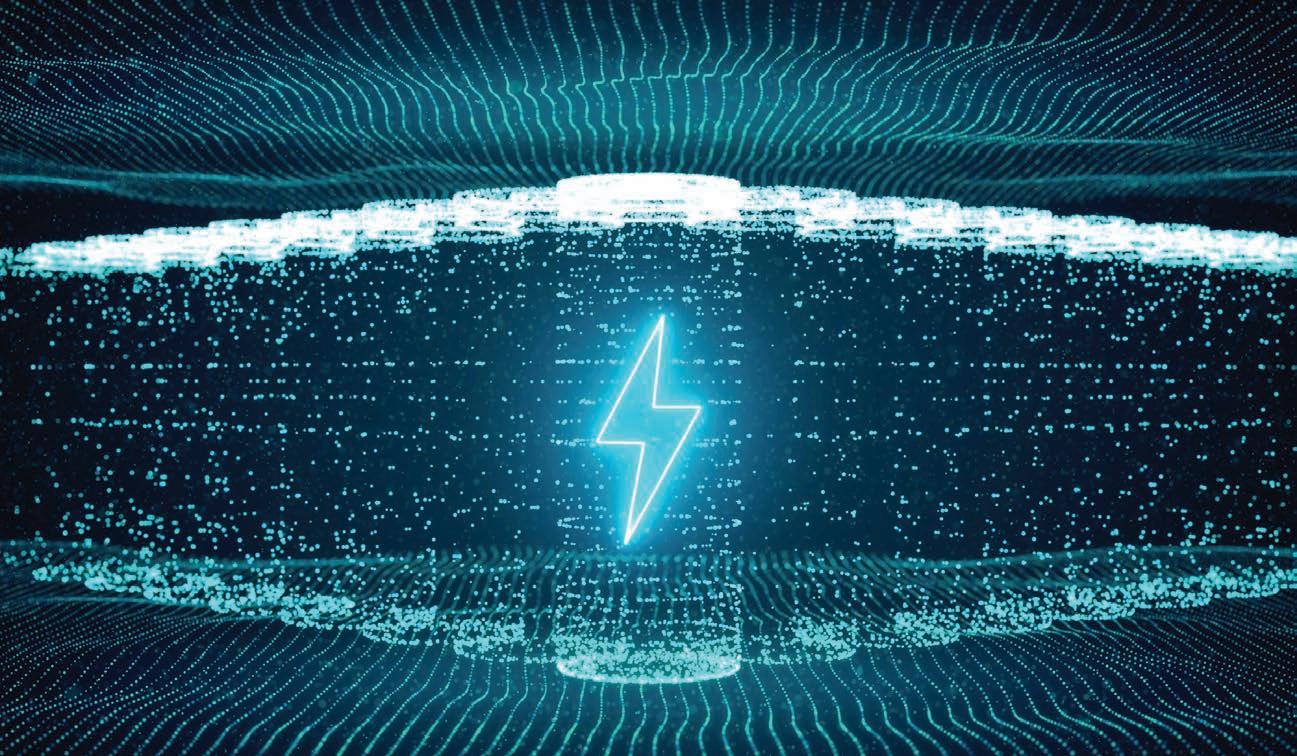
Professor Sahajwalla said recovering essential metals and materials from wastes as “feedstock ready” materials that do not need the costly processing of mined materials will usher in a new manufacturing era for Australia.
“Natural resources alone will not deliver the feedstock supply needed for our future needs, so we must develop a more sustainable approach, and the Microrecycling Hub aims to develop technologies enabling capability that aligns recycling and manufacturing right here in Australia.”
Professor Attila Brungs, UNSW Vice-Chancellor and President, said the Microrecycling Hub aims to boost resource recovery capability by creating new and scalable manufacturing
technologies based on SMaRT’s MICROfactorie concept.
“It is vital that we recover and reuse materials from complex batteries and other consumer wastes in manufacturing as we strive to decarbonise and build the electrification infrastructure needed for our renewable energy supplies,” Brungs said.
SMaRT MICROfactorie technologies use various, discreet modules to transform problematic waste materials, such as glass, textiles, and plastics, into new value-added materials and products, such as engineered green ceramics for the built environment and plastic filament as a ‘renewable resource’ for 3D printing.
SMaRT Centre houses various MICROfactories on site at UNSW and is supporting several industry and community-based organisations to adopt the technology.
Professor Sahajwalla said the science of microrecycling — in collaboration with industry partners — will lead to the creation of new pathways so waste materials can go from being low value to high value materials that can be used in manufacturing.
“The broader impact of the Hub will go beyond scientifically-developed recycling solutions. Climate change and clean energy narratives often overlook the need for more sustainable manufacturing and waste management practices where we start to use waste resources for future manufacturing supply chains,” she said.
Professor Nicholas Fisk, UNSW Deputy Vice Chancellor, Research and Enterprise, said while the $3.3 million Hub builds on previous waste and recycling breakthroughs developed by SMaRT, it is now forging new processes in partnership with industry partners so that technologies developed are commercially fit for purpose.
While the microrecycling hub was started during COVID-19 lockdown periods, it was launched in April 2023 as progress is being made on its research and development program.
A total of 13 scientific papers have been published in journals so far, eight of which were published in 2022. These papers are building a knowledge base for the goal of using wastes as a sustainable resource for future manufacturing needs.
Komptech CEA is a leading supplier of machinery and systems for the treatment of solid waste through mechanical and mechanical biological treatments, as well as the treatment of biomass as a renewable energy source. Komptech CEA is proud to provide innovative solutions for handling waste and biomass.

Komptech CEA’s extensive range of products cover all key processing steps in modern waste handling. At Komptech CEA the focus is always on innovative technology and solutions ensuring maximum benefit to the customer. Like to know more? why not speak to one of our team today?


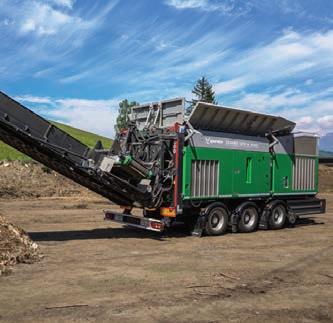
1300 788 757

Where Function Meets Technology
A slow-running, single-shaft shredder suited to all types of waste.


Less Fuel, More Power
Ideal for shredding all types of wood and green cuttings.
The Ideal Combination of Performance and Design
With a sturdy frame, powerful hydraulics and large drum, the Topturn X is ready to handle any work situation.
Screening with a Star
Makes waste wood and biomass processing highly efficient.
Robust and Reliable
Combining the practice-proven virtues of its predecessors with new solutions for even greater performance.

Shredding and Chipping Made Easy
One of the most versatile machines around for processing wood and green cuttings.
AS
THE RELEASE OF HELIUM BALLOONS, BOOMERANG ALLIANCE CAMPAIGN MANAGER TOBY HUTCHEON IS ADVOCATING FOR A NATIONAL APPROACH.
At present, states within Australia have differing laws on the release of helium balloons.

All states recognise balloon releases as an act of littering; however, it is not policed, and the activity continues. Three jurisdictions are planning to take further action and actually ban the practice. Western Australia did so last year, Queensland hopes to implement a ban by September 2023 and the Northern Territory has listed a ban on releases before 2025.
New South Wales has stopped short of a blanket ban, instead, its ban
only applies to the release of 20 or more balloons at the same time. Any release of under 20 balloons is not considered unlawful.
Some councils, such as Noosa and Sunshine Coast have taken it upon themselves to put balloon release bans into place.
The Boomerang Alliance, a member of the government stakeholder group on plastics, has been involved in the formulation of Queensland’s proposed balloon ban. Toby Hutcheon, Campaign Manager at Boomerang Alliance says the bill is expected to go to
a parliamentary committee for review later this year.
“The ban is essential given the threats that burst balloons have on wildlife, particularly marine and sea birds,” Toby says.
“Releasing balloons is considered littering in all states but is poorly policed with many unaware of the consequences, or that it is an offense. As a result, mass releases have continued despite the littering offense.”
Toby says that a specific ban will make people more aware of the regulation.
Littering, however, is not the only problems that arises as a result of balloon releases. A Commonwealth Scientific and Industrial Research Organisation (CSIRO) study found that balloons are among the top three most harmful pollutants threatening marine wildlife and are the biggest plastic killer of seabirds.
Research by Dr Jenn Lavers, from the Institute of Marine and Antarctic Studies, also suggests similar findings. Jenn says she has found balloons in about one in 20 sea birds she examines.
The Boomerang Alliance is not alone in its bid to encourage people to stop releasing balloons into the environment.
In Queensland the Labor Party, Liberal National Party and the Greens do not allow balloon releases at any of their sponsored events.
Most councils and the Local Government Association of Queensland have been advocating for a ban for several years.
National conservation group Clean Up Australia (CUA) is also an advocate of avoiding balloons.

On its website, CUA states that an Australian study in August 2020 showed that after 16 weeks in freshwater, saltwater and industrial compost conditions, latex balloons did not degrade.

It also pointed to another Australian research paper highlighting that balloons and other soft plastic waste in oceans are 32 times more likely to kill seabirds than hard plastic waste.
CUA is an advocate for finding environmentally friendly alternatives to otherwise harmful plastics.
It has numerous suggestions on how to avoid using balloons including using bubbles, paper pom poms, colorful flags, banners, pin wheels, streamers, or kites for special occasions.
Toby says it’s not about taking the fun out of events.
“We acknowledge that balloon releases are used at celebrations and commemorations, we just ask that those considering releasing balloons find alternative ways to commemorate that do not cause harm to wildlife and the environment.”
Toby says a specific ban on the release of helium balloons will make providers and their customers aware that it is illegal and damaging. He says it’s an opportunity for all providers and suppliers to ensure that balloons are discarded in a way that does not create litter.
Boomerang Alliance has suggested that helium balloons (recreational purposes) only be sold by members of the pro Balloon Industry alliance.
Three Australian states are planning to ban balloon releases.“Releasing balloons is considered littering in all states but is poorly policed with many unaware of the consequences, or that it is an offense. As a result, mass releases have continued.”
Toby Hutcheon,Boomerang Alliance Campaign
Manager
Waste Management Review introduces ‘The Breakdown’ a new monthly column giving industry leaders and decision makers a chance to share their views on topics central to the sector.

This month we asked industry leaders and decision-makers: “What can be done to solve Australia’s plastic waste crisis?”

The problems with plastic waste have been caused by the Federal Government rushing through bans on the export of unprocessed recyclables. Australia imports the vast majority of the manufactured goods that we consume, and it is not possible to use 100% of the plastic waste that we generate across the country in our very limited, local manufacturing sector. One solution would be for state governments such as the NSW Government who collect ~$775 million pa in the waste levy, to subsidise the costs associated with recycling, to make plastic waste a more economical export commodity on the world stage.
The entire supply chain needs to be engaged to address plastic pollution and waste in Australia (and the world!) and deliver a circular economy. The first priority is designing out waste, designing for reusability and of course recyclability. The second priority is to ensure proper regulatory frameworks that actually support resource recovery and recycling outcomes at end of use, rather than impede them with measures that do not get the balance right between environmental protection and circular economy industry development. The third priority is to ensure end markets for recycled material – without end markets, the recycling system cannot work.
Plastic is ubiquitous in all of our lives and eliminating it from everyday use seems unlikely. Reducing our everyday consumption of plastic would, however, seem like a good place to start. So how do we do that? There could be a number of effective strategies but let’s start with something simple and easy to do. Do we actually need a new fresh produce plastic bag for every piece of fruit and vegetable we buy at the supermarket each visit? What about keeping these plastic bags after their use, put them back in your shopping bag to use again and again?
We can eliminate avoidable plastics throughout the supply chain by incentivising sustainable design and penalising (through product taxes) non-adapters; and use taxes to shift demand towards using recycled plastic Tax revenue then invested on solutions to plastic wastes. Policy interventions must be consistently applied to limit burdens of operating across different statebased regulatory, tax and levy systems. As Australia represents a small market and population, we must consider environmental and other benefits from aiding elimination of plastic pollution in developing countries; noting 3+ billion people are without access to waste management, more are without access to recycling infrastructure

If you or someone at your organisation is an industry leader and would like to be a part of this monthly column in 2023, please get in touch with Editor, Lisa Korycki lisa.korycki@primecreative.com.au
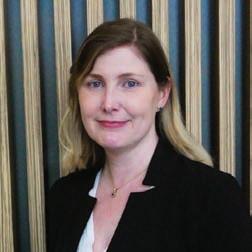
I do not believe that Australia is facing a plastic waste crisis. Plastic is inert. When landfilled, it remains inert. It does not generate GHG emissions and therefore does not contribute to the major crisis of our times, climate change. In well-run landfills it does not escape nor leach to the environment (plastic litter, especially in the world’s oceans, is indeed a crisis). It doesn’t even consume all that much oil (about four per cent of total production).

That is not to say that we should not strive to manage plastics better. We should. And by focusing on the 7500tpa collected by REDcycle, we pay less attention to the real problem, the 2.5 million tonnes of plastic Australia generates each year. We have to reduce consumption, invest in R&D for alternative materials and novel recycling methods, design plastics to be more recyclable, improve recycling infrastructure and address the looming market failure created the plastic export bans.

Ultimately, solving Australia’s plastic waste crisis will require collaboration and commitment from individuals, businesses, and governments.


INDUSTRY LEADERS ARE STEPPING UP TO
Australia is at a critical step-off point as it starts its Energyfrom-Waste (EfW) journey, says Ian Lynass, Blue Phoenix Australia Managing Director.
Ian says the industry is gaining momentum with the country’s first EfW plant under construction in Kwinana, Western Australia, and the first Incinerator Bottom Ash (IBA) plant ready to fire up.
He’s drawing on decades of experience and best practice to ensure that momentum is matched by an industry united in developing a platform for recapturing resources that until now have gone to landfill.
Ian has established the Manufacturers of Incinerator Bottom
Ash Aggregate of Australia (MIBAAA) Association, to bring together industry players to ensure sustainable and responsible pathways for the reuse of incinerator bottom ash.
The association will be supported by Manufacturers of IBA Aggregates Association (MIBAAA) in the United Kingdom, which has worked with regulators and industry to set standards for the reuse of more than 2.5 million tonnes of ash each year.
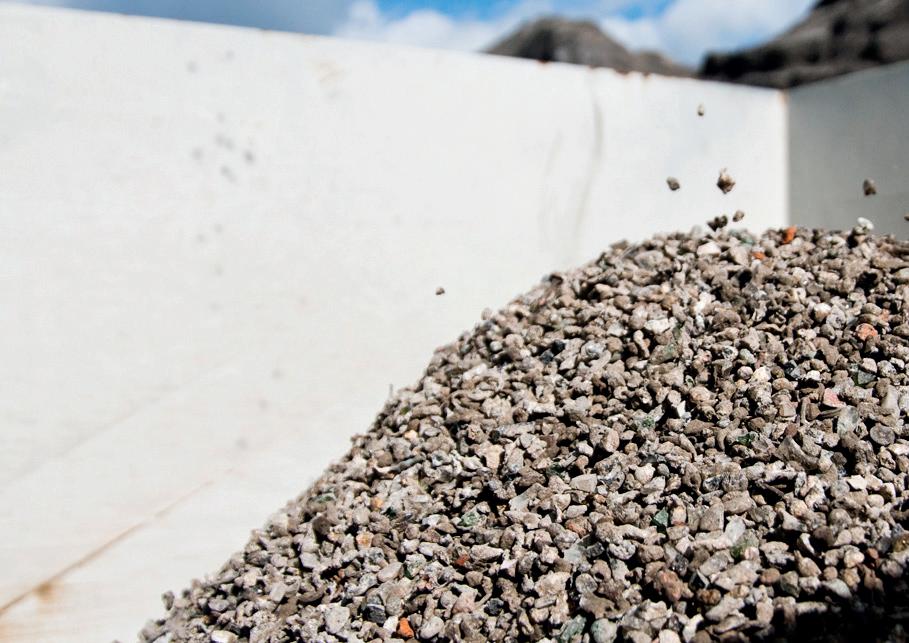
“Energy-from-waste is one of many key strategies for a population the size of Australia to deal with the waste it generates,” Ian says.
“IBA is a resource that has not previously been recovered in Australia. This is an exciting time to really tap
into recycled materials that we didn’t even know were there.”
Residual waste treated in EfW plants contains inert materials such as metals, glass, stones, masonry and slag. This material remains after combustion and is called incinerator bottom ash or IBA. The IBA is then treated in a secondary treatment plant to recover all ferrous and non-ferrous metals, screen and size aggregates and remove any unburnt materials.
Blue Phoenix will process 100 per cent of the IBA ¬ about 80,000 tonnes per annum – from the Australian EfW plant. Ian says the process seeks to liberate agglomerated slags and
metals to allow for further refinement and valorisation, but importantly, the residual minerals are recovered to provide a proven aggregate for reuse in the civil construction industry.


For the past 20 years, Blue Phoenix Group in Europe has recovered and safely reintroduced 15-million tonnes of aggregates, predominantly into road base, with no detrimental environmental effects. It’s those learnings Ian and MIBAAA members will draw on to map Australia’s regulations.
“Every Australian state will require some form of regulatory pathway but there is nothing currently in place,” Ian says.
“We’re leveraging off 20 years’ experience in the UK where there’s a similar regulatory environment and the material is not dissimilar to what will be used in Australia. We’ll stay with
what we know works but be focused on what works within Australia.
“It’s important for us as an industry to provide a platform to share knowledge so we can ensure the way we develop and use IBA is uniform.”
MIBAAA was established two years ago and is chaired by Ian. Inaugural membership of the association and committee include Allan Jones, Operations Director, and Brian Lloyd, Project Manager for Ash Projects, both of Avertas Energy; Jason Pugh, Chief Executive Officer, and Andrew Steers, Chief Financial Officer, both of the East Rockingham Regional Recovery Project; and Wally Lukic, General Manager, and Roger Stevens, Environmental Technical Manager, both of WA Limestone.
All members of the association provide equal funding which, to date, has been used to develop Australian standards for the burgeoning IBA industry.
Ian has spent the past two years presenting a universal voice for the association. He’s expecting the association to grow as EfW projects that are being approved
and constructed around Australia come online.
“It’s a critical step-off point in terms of having an industry-focused body that’s solely looking at responsible development of pathways with regulators and authorities,” Ian says.
“We’ve taken a proactive stance as an industry to provide selfgovernance to ensure the material is used appropriately and is at a standard that is able to be responsibly and sustainably reused.
“Australia can sometimes struggle with the harmonisation of laws but if industry can come together and create unity in the way we manage sustainable and recoverable outputs, and build the knowledge base of the Australian aggregate industry, that’s pretty exciting.”
Ian believes Australia is at the forefront of a generation of difference and IBA will play a role in road and civil construction. But, he says, there’s a lot of work to ensure it’s done properly.
While there’s a willingness to look at recycled material for road building, there is still an entrenched perspective that recycled material must be the same as virgin material.
Ian says a different approach needs to be taken. He agrees you can’t just
throw anything in to build roads, but IBA has been proven in civil and road construction for the past 20 years.
“We want people to understand that this aggregate is a direct replacement for virgin materials,” Ian says. “It’s no longer a waste but is transformed
and has a valuable use in the market.” Long-term, MIBAAA will look at what else IBA can be used for, such as a replacement for concrete, filler, or clinker. Ian says there’s opportunity for IBA to be used in bound and unbound applications.

“When you think about all the materials we’re trying to recover and reuse in Australia, you have to ask what else can this technology be used for,” he says.

“Long-term it will be interesting to see where it goes. It’s an exciting platform to be part of. As Australia transitions to a low waste circular economy, there is no better example than IBA reuse, which is a product with proven uses in civil applications that saves the mining of virgin aggregates.”
For more information, visit: www.bluephoenix-group.com.au
“Every Australian state will require some form of regulatory pathway but there is nothing currently in place. We’re leveraging off 20 years’ experience in the UK where there’s a similar regulatory environment and the material is not dissimilar to what will be used in Australia”.”
Ian Lynass, Blue Phoenix Australia Managing Director.


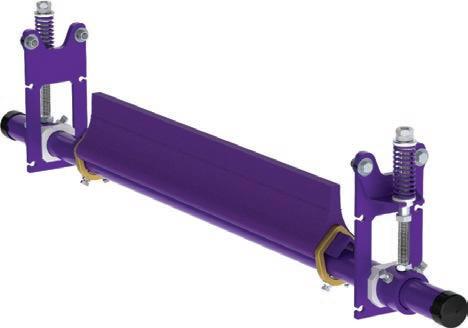


No one person can solve the problem of plastic recycling, says Simon Mathewson.
The Commercial Lead in Australia and New Zealand for Advanced Plastic Recycling at Licella, Simon says it will take a collective understanding across industry of the need to move in the same direction to achieve results.
Thanks to what he describes as an evolution of modern manufacturing, Australia is headed in the right direction.
Licella is about 18 months from opening the first full-scale plastics advanced recycling facility in Australia using hydrothermal liquefaction – an innovative technology that uses hot pressurised water to take plastic back to the oil it originally came from.
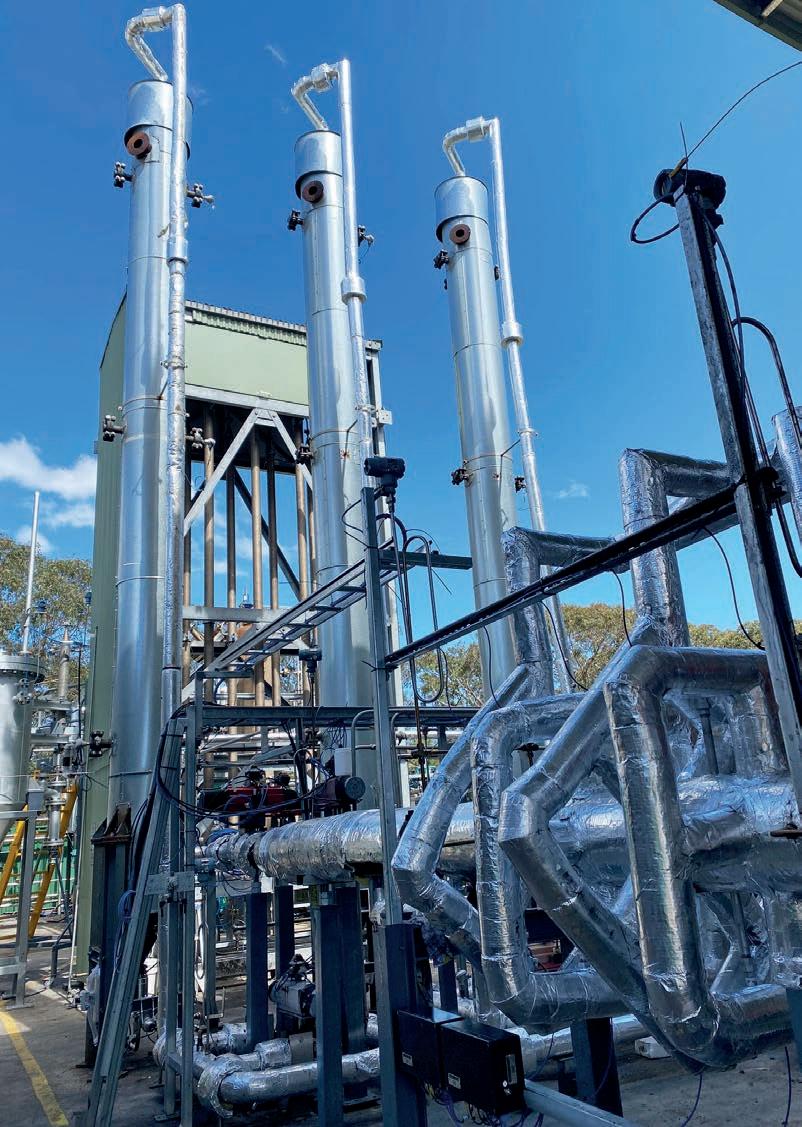
The company, under Advanced Recycling Victoria (ARV), has an Environment Protection Authority development licence for stage one of the facility to be built at the old Dow Chemical site, in Altona, Victoria. Construction is expected to begin within months and the company has ambitious goals to be operational by the second half of 2024.
Simon says it’s an unprecedented opportunity to support local technology that reduces emission, compared to waste-to-energy and keeps more plastic in circulation compared to other approaches such as pyrolysis.
“If Australia is serious about reaching its plastic waste targets and addressing plastic waste and pollution, we need to embrace new technology such as advanced recycling,” he says. “We need consumers thinking about what’s possible and what’s
LICELLA IS KEEN FOR EVERYONE TO JOIN THE JOURNEY.
not. We need government asking what do we expect? And we need industry to be open to new technology and asking how do we adapt to that? Aligning those three things takes bold, brave and collective action.
“What we’re doing is really important but it’s just one piece of the puzzle. We all need to lean in.”
Simon says Australia has a more mature, and growing, mechanical recycling market but that isn’t the answer for all waste. And while energy-from-waste is recognition of the value in waste, when you burn it, it’s gone. Plastics is no different from other recycling streams in that it needs circularity.
Advanced (or chemical) recycling, Simon says, is the next step in working with industry to close the loop across the vast majority of plastics still going to landfill.
Licella’s Cat-HTR (Catalytic Hydrothermal Reactor) platform, uses water to create a controlled reaction that means it’s a less energy intensive process and produces a better yield of oil than pyrolysis. It creates a high-grade oil, which is suitable to go back into the local plastic supply chain without any further purification steps. Ultimately, this helps keep more plastic in circulation and further reduces the demand for virgin plastic from fossil resources.
Simon describes soft plastics feedstock as the immediate priority for the recycling plant. They will play an important role due to the lack of soft plastic recycling options at scale currently, but Licella is looking to fill the gap for a broader range of advanced plastic recycling.
“We have value chain partners across post-consumer, post-industrial and agricultural sectors,” he says. “All of those sectors produce plastic waste, and it all needs to be recycled.
“Post-consumer plastic is great, but it’s not the only plastic that needs a home. This is a much bigger problem that we’re looking to solve.”
Licella is in discussion with organisations across the value chain including waste management, large retailers, and industrial waste producers, to ensure a diverse range of plastic feedstock for the facility. Simon says once the facility has proven circularity of hard-to-recycle plastics it will expand to absorb other waste plastic feedstocks that are currently not collected because there’s nowhere for them to go.
One of the advantages of chemical recycling is that it’s working with the supply chain of plastics, not trying to change it.
Simon says that the building blocks, or chemicals, of the oil produced by CatHTR are the same as refined fossil oils. He says demand for offtake requests for the oil from ARVs advanced recycling plant are already extraordinary.
In December 2022, global packaging company Amcor announced it will collaborate with Licella on ARV’s Altona facility, to support the production of new food-grade recycled plastic packaging.
Licella has ambitions to process 400,000 tonnes of plastic waste across Australia within the next five to 10 years.
ARV’s Altona facility initially aims to process 20,000 tonnes a year of waste plastic and is expected to scale up to 70,000 tonnes with an additional 50,000 tonne module added once the next approval comes through from the Victorian EPA.

The Altona plant is one of six currently being built around the world including three in South Korea and others in the United Kingdom and Japan. Plans are also in place for New South Wales and New Zealand.
“We’re already developing a pipeline for this technology in Australia,” Simon says. “We need to be doing this at scale to meet our ambitious national waste targets.
“What we’ve always focused on is circularity in an Australian context. We’d like to be in a position where we are recycling all the plastic Australia produces.
“If the plastic used in Australian produce packaging is manufactured locally – that would be an example of a true plastic circular economy in action.”
For more information, visit: www.advancedrecyclingvictoria.com
The Australian Food and Grocery Council (AFGC) is working to provide a long-term solution to recycling soft plastic waste within Australia.

The National Plastics Recycling Scheme (NPRS), being developed by the AFGC, the peak body representing food, beverage and grocery manufacturers, is a product stewardship scheme aimed at creating a circular loop for soft plastics, starting with kerbside collection and flowing all the way through to advanced recycling, to make new food-grade plastic packaging.
Tanya Barden, Chief Executive Officer of the AFGC, says the scheme is already starting to change Australia’s recycling landscape.
“We have been working with a willing, motivated group, including not only food and grocery manufacturers, but those local councils, waste collectors and processors, advanced recyclers and plastics manufacturers that see the need for a sustainable soft plastics recycling scheme in Australia,” she says.
“What really strikes me is the passion and drive coming from CEOs of major food and grocery brands that are behind this scheme. The rest of the packaging and resource recovery supply chain should be encouraged by that level of drive and commitment.”
The effects of limited markets for recycled soft plastics were made clear with the collapse of REDcycle. The national in-store collection program ceased
operations in November 2022, citing an untenable imbalance between the growing supply and dwindling demand for the collected material.
At the time, industry sources said there was a need for all sectors across the soft plastics supply chain to bridge the gaps in Australia’s recycling infrastructure.
Tanya says the NPRS differs from REDcycle in its scale of collection, development of end markets and governance.
“Soft plastics make up about 40 per cent of all plastic packaging, and while REDcycle was a popular scheme, it collected less than five per cent of consumer soft plastics with the remaining 95 per cent going into landfill,” Tanya says. “The NPRS aims to make soft
plastics recycling more convenient for the community by using kerbside collections, which will boost the volumes collected and processed each year.
“We know there are currently market failures in soft plastics collection and processing, in part because of the low value and limited end markets for the material. Stepping in to fund economic gaps in the supply chain is only one aspect of the scheme. We are also using new technologies to get the plastic back into food-grade safe material, which is the big game changer and opens up new end markets.
“We’re conscious that for the scheme to be effective it needs to include the creation of end markets. The final design will also include mechanisms to drive the uptake of recycled content. REDcycle
material was going into uses like bollards and benches. We’re creating a circular loop and bringing that material back into consumer packaging and we’re making sure we have targets and reporting that will be transparent and available publicly.”
The AFGC received federal funding to assist in the design of the NPRS project in 2020. Since then, AFGC member companies have signed on as Foundation Supporters of the project, committing funds to enable trials to be conducted.
APR Plastics in Victoria, which operates a pyrolysis plant that breaks soft plastic back into its original oil form, has signed on to process the material collected during the trials. The oil will be sent to a refinery to be further processed so it can be reused in making food-grade plastic films.
The AFGC is also in talks with other processors, including Cleanaway and plastics maker Qenos, who between them have signed a Memorandum of Understanding to conduct an advanced soft plastics recycling feasibility study.
Tanya says advanced recycling, whether it be pyrolysis, or Catalytic Hydrothermal Reactor (Cat-HTR), is being considered because current mechanical recycling technology doesn’t produce the food-grade quality plastics required for packaging.
The NPRS is technology neutral and open to working with other processors that can similarly deliver de-contaminated food-grade plastic. Since work on the
NPRS project began, it has stimulated new commitments for investment in advanced recycling plants. But while there is interest in increasing recycling capacity within Australia, the AFGC is aware any new infrastructure will take time to be installed.
The NPRS will be rolled out to coordinate with processing capacity as it comes online.
“We don’t want to end up with a collection market that outstrips demand and results in soft plastics being stockpiled as happened with REDcycle,” Tanya says.
“We’ll be phasing in the program so that collection and recycling opportunities come online together. That may mean we need to use mechanical recycling for some soft plastics in the meantime, but the goal is for it all to go to advanced recycling.
“Industry wants more food-grade recycled plastic. The challenge is the supply is very low globally because of a lack of capacity. In fact, global supply is less than one per cent of demand. We want to strike the right balance to move quickly and keep pace with the roll-out of capacity and make sure we preserve the integrity of recycling.”
Currently, the project is focused on scalable collection of soft plastics with limited trials of kerbside collection being carried out in six local government areas across Victoria, New South Wales, and South Australia.
Households in trial areas received information kits containing plastic
recycling bags produced and printed for the trial. Participants fill the bags, close them, and put them in their yellow-lid kerbside recycling bin.
Tanya says the trials are aimed at understanding scheme costings and what bag type will minimise any chances of contamination of mixed recycling, such as soft plastics mixing with paper, and the greatest level of consumer uptake.
“We’re looking at different options to make sure there’s no contamination,” Tanya says.
“We want this to work for the environment but we’re also conscious that we want to make sure we’re not causing any unintended consequences for the recycling system.”
The AFGC considered upscaling instore collection and using container deposit depots for soft plastics collection but, Tanya says, the bag-in-bin option stood out because of its convenience for consumers and cost effectiveness.
The bag-in-bin process has been proven in Belgium and the Netherlands, and results so far in the Australian trials are also positive.
The first trial phase involved about 2000 households in each participating council area. Phase two, scheduled for the middle of the year, will expand trials to new areas and more households.
Tanya says learnings from the trials will be used to broaden the scheme into other council areas incrementally.
The AFGC is in discussions with state and federal governments on what role it can play. Tanya says that with government funding the scheme can be rolled out more quickly, subject to processing capacity.

“Collective action is critical,” Tanya says. “A circular economy does require collaboration across many stakeholders and I’m proud of the important role the AFGC is playing in finding a solution.”
For more information, visit: www.afgc.org.au
837,000 An initiative of



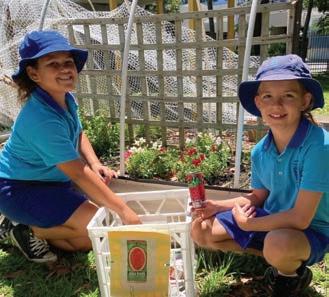
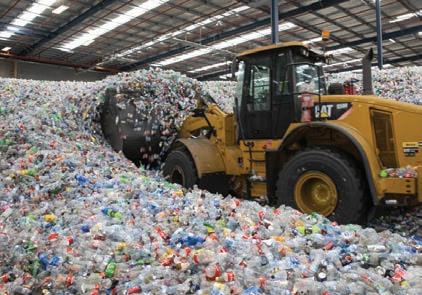

The notion of a circular economy has been brought to the fore since the Chinese Sword policy came to the fore in 2018. Suddenly, Australia had nowhere to ‘recycle’ its plastic waste.
What most everyone didn’t understand was that sending the nation’s plastic waste offshore was doing little to drive recycling within Australia.
With the sudden stop of exporting this waste and no alternate plans to deal with it, Australia was left in a lurch. The circular economy concept was quickly rolled out with recycling targets to do away with excess packaging and unnecessary plastic.


Now as we approach the dates of some of these target goals, reality is starting to set in. We are not going to meet these targets and in fact, we are going to miss them by decades.
It will take much longer than the optimistic plans that have been developed the past few years.
To make effective change, Australia needs industry to change product designs and materials and to be involved in extended producer responsibility programs; governments to introduce regulations to push the sustainability of the economy in a different direction (concepts like including a virgin materials tax which would incentivise industry to use recycled content); consumers to change their lifestyle, consumption habits and pay more attention to how to dispose of their waste; and to build infrastructure to collect ‘waste’ and bring
it back to processing facilities. This has to be achieved without making recycled material more costly than virgin materials, otherwise there is little incentive for the recycled materials to be used.
What has become clear is that developing a circular economy is going to take a long time to bring to fruition. In addition to the above hurdles, there is also the issue of how our plastic waste is going to be recycled.
We currently only process, about 15 per cent of our 3.5 million tonnes of plastic waste. We call this recycling. This 15 per cent encompasses all plastic that is collected and repurposed for other more
basic products or applications such as use in roads and outdoor bollards.
This is repurposing, not recycling. True recycling involves collecting the waste, processing it, and returning it to the original manufacturers for making more products, without the need for more virgin plastic. The displacing of the use of virgin materials with recycled materials to make more similar products is the definition of a circular economy.
The Chief Executive Officer of Waste Management and Resource Recovery Association of Australia recently stated that for Australia to achieve its circular economy targets requires two million
additional tonnes of demand for recycled products and material every year from now until 2030, which means another 14 million tonnes of recovery infrastructure alone.
To:
Date: July 11, 2020
There are several pilot programs underway across Australia to recycle plastic using some advanced recycling process. Most centre around pyrolysis (the melting of plastic in the absence of air to make a liquid that can be used to make new plastics), or some modification of it.
From: Thomas Poth
Number of pages including cover: 1
This process is energy intensive, requires separation of plastic types, has many byproducts to manage and requires a market for the final product. With improvements in technology and incentives, this may yield one way to effectively process some plastic waste.
Regarding: ASTM D5511 study update for Tape - 844 days
Landfill-biodegradable plastics can be considered a way to complement the transition to a circular economy.
The many millions of tonnes of plastic that will continue to be manufactured and eventually sent to landfills while the circular economy is being developed, can be made to naturally biodegrade away over years or decades rather than persisting for many centuries.
Landfill-biodegradable plastic is accomplished by adding a small amount of inert organic supplement, made of up highly biodegradable polyesters, to the parent plastic. Once in a modern landfill,
the microbes see the polyesters as a food source and colonise onto the plastic. As they digest the food, they release enzymes that attack the plastic under them to dissolve off non-plastic intermediates which the microbes can consume as more food and then release more enzymes.
The landfill-biodegradable technology can be applied to most forms of plastics – Polyethylene (PE), Polypropylene (PP), Polyvinyl chloride (PVC) and more – with the same results. This is a highly accelerated rate of biodegradation compared to a conventional plastic.
Plastics made with landfill-biodegradable technology complement the circular economy as they maintain the
same recyclability. A landfill biodegradable plastic product is as mainstream recyclable as a conventional plastic product. The added supplement is an organic food source which sits alongside the polymer chain. It doesn’t interact with the chain, so the plastic polymer retains its original properties; hence its recyclability is maintained.
Presently almost all plastic waste is being disposed of to landfill. As the circular economy model is implemented, more plastic is recovered and recycled and less goes to landfill. The plastic that is being sent to landfill will still be able to biodegrade away and the plastic that is sent for recycling can still be recycled with no compromise from the addition of the supplement.
The same applies to plastic that is repurposed into more basic products. The inert supplement will remain there with no interaction with the polymer chains and the new products look and perform like they would if they were made from conventional plastic waste.
Results of the ASTM D5511 method and on the assumption that the positive control (Cellulose) will fully biodegrade; all values have been proportionally adjusted.

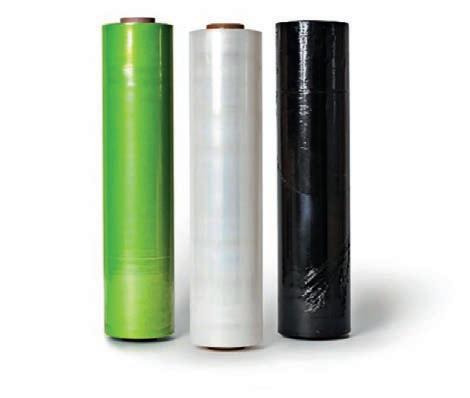
* Outside of the ASTM D5511 method and on the assumption that the positive control (Cellulose) will fully biodegrade, all value have been proportionally adjusted.
Even with all of this, it is inevitable that there will always be residual plastic waste which will never make it to any recycle process for several reasons and will always need to be disposed of to landfill. Having it produced as landfill-biodegradable allows it to biodegrade away in a modern landfill. This is a win for the environment with respect to plastic waste.
• No shelf-life limit. The inert supplement has no impact on the plastic material until the plastic is disposed to a modern landfill. Only there will the effect of the landfillbiodegradable technology come into play.


• The supplement has US FDA approval for food contact, allowing landfillbiodegradable food packaging to be produced.
• No microplastics are actively created. Microplastics derive from the break-up of a plastic item into tiny fragments. There are additives which contain chemicals called prodegradants, which contain metal salts. When added to a plastic, they interfere with the polymer chain and set off a slow chemical reaction that causes the polymer chain

to break up over 12-18 months into thousands of microplastic pieces. These plastics are called degradable plastics and are being banned in many places. With the landfill-biodegradable technology, the inert supplement has no impact on the polymer chain and hence no microplastics are created by its presence.
• About 76 per cent of Australian household waste goes to landfill providing waste-to-energy recovery. Allowing plastics to biodegrade allows them to contribute to this and displace energy that would otherwise be
the only change for a small price increment.
Like any plastic, they will all photo degrade in sunlight as the UV radiation directly attacks the polymer chain in the plastic. For any biodegradable plastic, if they get into the oceans, there are no microbes there to digest the plastic away.
Plastic waste is going to be going to landfills for many years to come. Landfillbiodegradable technology can help this

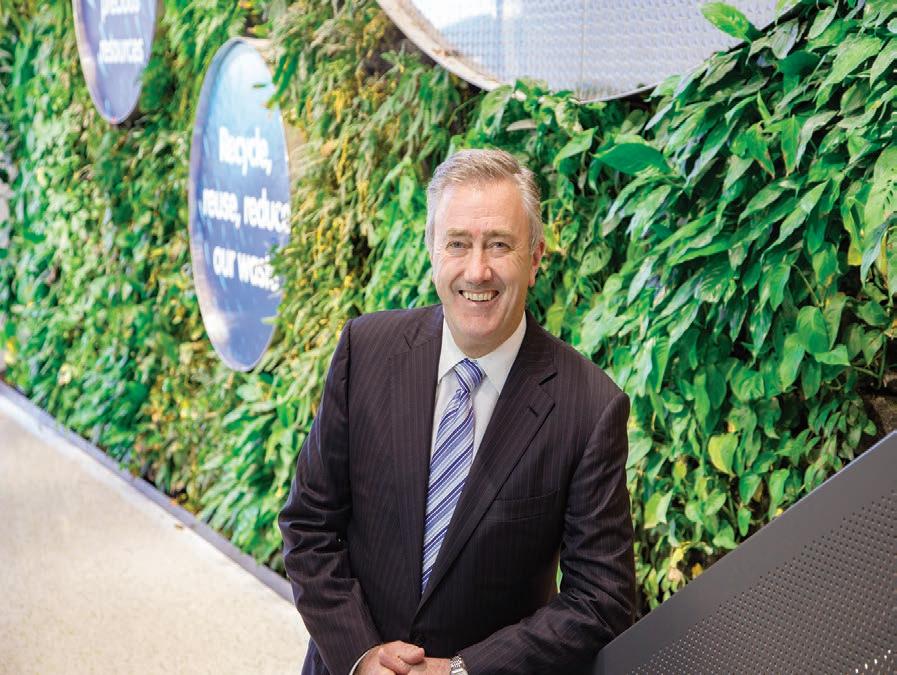


the ability of future generations to meet their own needs.
Australia’s recycling and waste reuse rate has remained at 60 per cent since 2018 despite waste generation increasing to 76 million tonnes per year. Achieving the national target of 80 per cent average recovery rate by 2030, will require embracing new technologies, innovative and collaborative partnerships and welldesigned, evidence-based strategies.
If implemented strategically, these technologies have great potential in the Australian market to increase the uptake of recycled content.
Recycling is often dismissed as insufficient but remains a key element of the circular economy. It has been reported that global circularity is currently at 7.2 per cent and most of that is due to the contribution of recycling processes.
With the National Waste Policy and associated targets encouraging state government and councils to take innovative approaches to divert waste from landfill, there has never been a more exciting time to be working in the waste space.
As Australia tackles one of its greatest challenges – the transition to net zero – the circular economy addresses 70 per cent of global greenhouse emissions attributed to resource use and handling.
It’s been estimated that a circular economy could give Australia a $23 billion GDP boost by 2025, according to a report commissioned by the CSIRO. The waste sector, and those who generate waste more broadly, have an opportunity to derive greater value from materials, resulting in improved environmental outcomes and increased jobs. Adopting a circular economy approach will help us meet the needs of the present without compromising
The circular economy requires new technologies to cost-effectively recover, upcycle and recycle materials that might otherwise go to landfill. In plastics, the portfolio of technologies offered by advanced recycling – such as pyrolysis, hydrothermal or gasification – can address Australia’s current challenges in soft plastics or those not suitable for mechanical recycling.
While technologies for sorting mixed plastics and processing them into other products already exist, there are limits on how many times plastics can be recycled.

The next technological step is to break down plastics to their chemical building blocks, then process them through polymer and packaging infrastructure so they can be recycled indefinitely. This keeps the raw materials in use and offsets the need to consume more of the world’s finite resources.
Criticism arises from the fact that recycling is not the only strategy for achieving a circular economy. Interventions earlier in the lifecycle can have much greater impact, such as the design phase, where 70 per cent of a product’s environmental impact is locked in. A transition to renewable resources and slowing the rate at which products and materials move through our economy are two other effective strategies.
A report led by the Royal Melbourne Institute of Technology on Enabling Design for Environmental Good is an excellent reference for the role of design in the circular economy. Taking plastics as an example, good product design should either eliminate unnecessary plastics from use, only use plastics that are easier to recycle, or make it easier to disassemble products so the plastics can be recovered economically.
While the importance of innovative technology cannot be overstated,
– CIRCULAR ECONOMY AND RESOURCE RECOVERY AT GHD, EXPLAINS HOW AUSTRALIA CAN MEET THE NEEDS OF THE PRESENT WITHOUT COMPROMISING THE ABILITY OF FUTURE GENERATIONS TO MEET THEIR OWN NEEDS.
collaborative partnerships enable the creation and adoption of these technologies in the most effective ways.
Kimberly-Clark Australia’s ‘The Nappy Loop’ project is an example of how collaborative partnerships can achieve a fundamental shift away from a linear supply chain. The project trialled anaerobic digestion technology to convert disposable nappies into nutrient-rich compost and bioenergy when combined with expired food waste. The plastics were also separated and recovered as part of the process.
Though the technology was critical to the success of the trial, collaboration from across the supply chain played an equally important role in the project’s success.
Under leadership of Kimberly-Clark Australia, and with support from Green Industries South Australia, G8 Education provided clean source separation, Solo Resource Recovery provided the transport, Peats Soils and Garden Supplies delivered the technology and processing, and CSIRO provided scientific validation of the trial.
Another example in circular economy supply chain partnerships is the Licella technology, that demonstrated proof of concept to process plastics in Australia.
The partnership involved nine companies – Nestlé, CurbCycle, iQ Renew, Licella, Viva Energy Australia, LyondellBasell, REDcycle, Taghleef Industries and Amcor – to close the loop on soft plastics and collect, process, and convert waste plastic into a food-grade confectionary wrapper.
The collapse of the REDcycle soft plastics collection was a sad example of what happens when there is insufficient local processing capacity and markets for recovered materials.
REDcycle successfully implemented a collection scheme for a problematic packaging product that was supported by consumers and major brand owners. Unfortunately, the scheme suffered from its own success through increased material collection and a lack of domestic recycling markets.

The failure of the REDcycle program is evidence that the entire supply chain – collection, processing and market development – must be considered for recycling interventions.
Realising the benefits and implementing a circular economy within an organisation

or industry requires adherence to some fundamental concepts. The context of applying those concepts will vary.
Developing a strategy, roadmap or business model can set an organisation on a path to realise those benefits. By engaging with customers, industry segment or supply chain, a business can gain an understanding of how to regenerate materials, use fewer resources, make resources last longer and become more recyclable.
Australia needs to acknowledge that there are less-than-ideal outcomes as it shifts from the linear status quo. Simple sounding solutions such as converting all plastics to biodegradable polymers ignore the complexity of the challenge.
Biodegradable plastics are certainly one option but are not always fit for purpose when suitable composting facilities don’t exist, collection arrangements are not aligned, standards and labelling is voluntary, and consumers are confused about what bin to use.
As Australia transitions to a circular economy, lessons will be learned from missteps and failures, along with successes and celebrations. With the right technology, partners and strategy, Australia can adopt a circular economy approach to reduce waste, convert waste into a resource, transition to net zero, reduce environmental impact, and create sustainable jobs and communities of the future.
GHD works with clients to scope opportunities and develop strategies that can help close the loop. With technical expertise in concept development, feasibility evaluation and business case development, through to impact assessment and approvals, stakeholder engagement and detailed design of new infrastructure, the team can help businesses design out waste and maximise resource recovery and circularity.
For more information, visit: www.ghd.com


Recycling of soft plastics has been thrust into the spotlight since the collapse of national collection service REDcycle in November 2022.
The failure has highlighted the disconnect between Australia’s ambitious reuse targets, to have 70 per cent of plastic packaging recycled or composted and an average of 50 per cent recycled content included in packaging by 2025, and the infrastructure available to handle plastic recycling at scale.
Industry says there’s been too much focus on the collection side of soft plastics, and not enough on manufacturing.
Eric Paulsen, CEMAC Managing Director, says pelletising and extrusion are key technologies to give plastic waste new value and set a sustainable pathway to a circular economy.
“If Australia wants to increase the recycled content in manufacturing, we have to generate a quality pellet that can be reused,” Eric says. “Plastics need to be processed with a view to their future use. Anyone can melt a product, but if the quality is poor, it can’t be added back into the manufacturing process.”
A push from more brands to increase recycled content in their product
packaging will, says Eric, drive onshore demand for plastics that can be recycled mechanically.
He says technologies that deliver consistent and reliable outcomes will play an important role in a sustainable local remanufacturing industry.
That’s where EREMA comes in. EREMA recycling technology can process post-consumer and post-industrial plastics including LDPE washed flakes, agriculture film, PE film, pallet wrap, printed metallised films and polyolefins.
Among many other projects, EREMA has worked with Spanish recycling

company Anviplas, to improve recycling processes for complex multilayer materials.
Anviplas recycles post-industrial and post-consumer plastic waste, mainly HD and LDPE, as well as PP, to make recycled pellets in all colour variations.
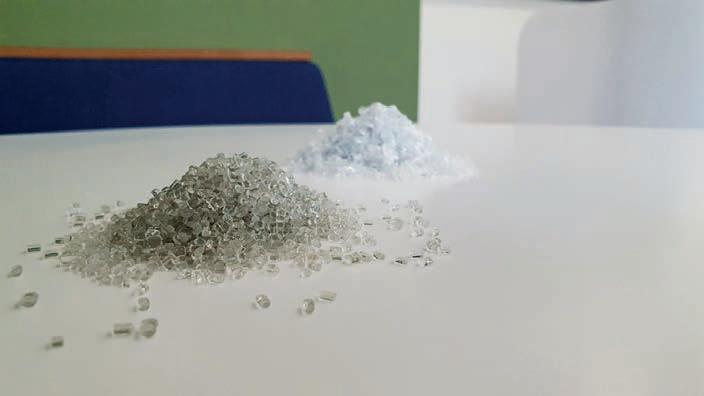
Its customers manufacture a variety of products using its recycled pellets including film products – such as stretch, shrink, mulch and silage films – to irrigation, corrugated and high-pressure pipes, as well as containers such as tubs, bottles, barrels, and crates.
Eric says all these applications require recycled pellets that meet high specifications.
Anviplas operates an EREMA type INTAREMA 1716 TVEplus recycling machine with screen changer for processing PP material. The patented extruder system was developed for difficult-to-process materials, such as heavily printed films, as well as materials with high moisture content.
Eric says ultrafine filtration, melt homogenisation and degassing are performed in a single step.
“The melt filtration takes place upstream of the extruder degassing. As a result, end products can be produced with the highest possible recyclate content.”
The machine features triple degassing with the preconditioning unit, screw design and extruder degassing, ensuring
there are no residual contaminants in the materials that could reduce the quality of the end-product.
Initial degassing in the preconditioning unit takes place through preheating and pre-drying the material. The screw design – tuned to the material being processed – enables reverse degassing in the preconditioning unit, and gas inclusions in the melt are removed in the extruder degassing zone.
“Only melted, filtered and homogenised material can pass the degassing zone of the extruder,” Eric says.
The machine also offers a higher output rate with the same screw diameter compared to conventional degassing extruders.
EREMA is well established in the recycling industry. It started in 1983 developing equipment to recycle plastic
waste and has grown into a global leader in the supply of plastics recycling machines. Its ethos is to continue to research new technologies to conserve resources and close loops.

The company’s latest recycling innovation, the INTAREMA TVEplus DuaFil Compact system, has been shortlisted for this year´s Recycling Awards Europe in the Recycling Machinery Innovation of the Year category.
Eric says the double-filtration machine is also suitable for recycling stretch and shrink LDPE/LLDPE film from packaged pellets contaminated with labels. It combines TVEplus technology with a new patent-pending DualFil Compact design, that handles the melt gently throughout the process.
“The melt pump takes over the necessary pressure build-up for the second filtration unit, so the extruder no longer needs to do that,” he says.
“This reduces the residence time, the melt temperature and the energy consumption and results in better quality of melt and the recycled pellets.
“The machine is the first choice for many challenging materials, especially when the application requires polymerconserving processing as well as strong filtration.”
For more information, visit: www.cemactech.com.au
years of disposal life remaining. Its size and position make it ideal to transition away from landfill to a resource recovery hub, not just for the city but the region.
The Hunter region’s only materials recycling facility closed in 2020. While City of Newcastle secured processing capacity at a facility in Central Coast with a longer-term view to develop its own MRF at Summerhill, other regional councils were forced to transport their recyclables to Sydney at additional costs to their ratepayers.
Consultation by the City of Newcastle found that other Hunter councils want a local solution for their recyclables rather than sending material outside the region.
The waste hierarchy preferences waste avoidance, but for most local government that’s the area where it has the least influence.
Where it can make a difference is the destination of the waste it collects. The City of Newcastle is determined to make a big difference.
As part of its Sustainable Waste Strategy, the city is developing a material recovery facility (MRF) at the Summerhill Waste Management Centre (SWMC) to maximise the value of the region’s recycling.
It’s hoped the strategy will be a catalyst for circular outcomes, driving new industries, creating new jobs, and reducing the reliance on fine resources – with Summerhill Waste Management Centre at its core.
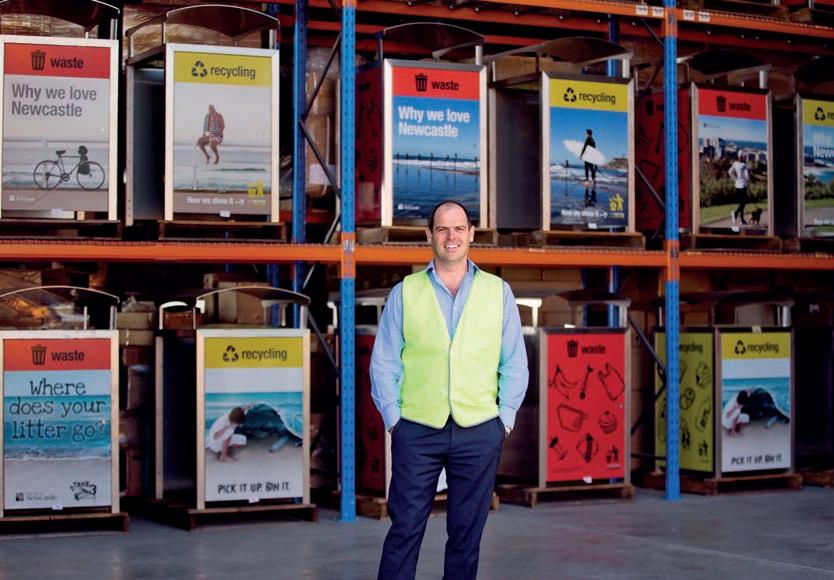
SWMC, located on a former open-cut and underground mine that operated until 1988, is the second largest landfill in NSW. City of Newcastle acquired the site in 1990 and it has operated as a waste management centre since 1995.
Permitted to dispose of 364,0000 tonnes a year, the site has about 100
The Summerhill Waste Management Centre MRF will sort the recyclables collected in yellow lid recycling bins into single material streams, which will then be sent to domestic manufacturers for processing into new products.
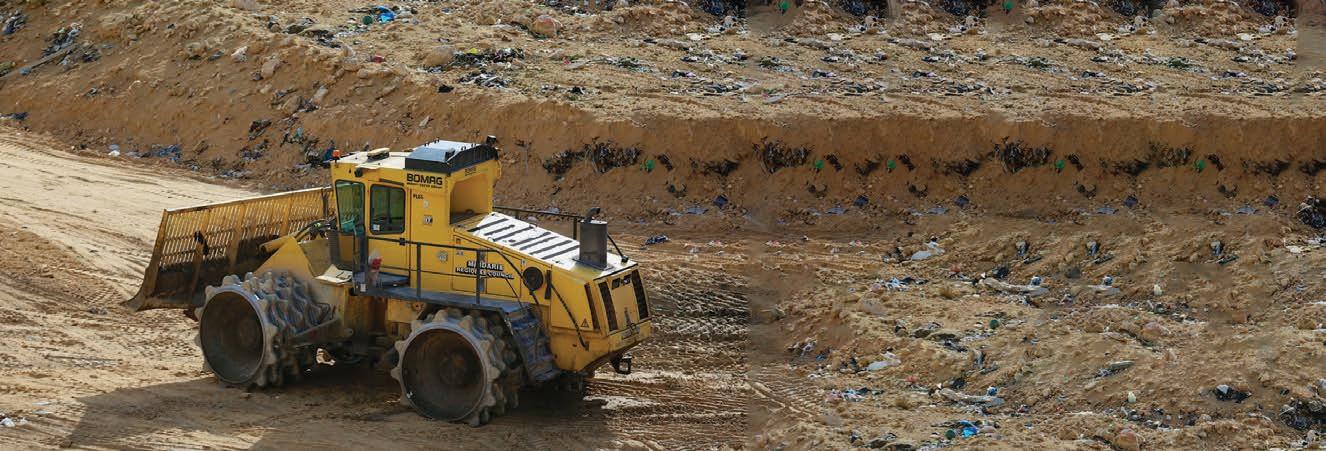
A local facility will also reduce associated transport costs and carbon emissions.
City of Newcastle secured $5 million in funding under the Remanufacture New South Wales program to support delivery of the MRF. The council is currently evaluating tenders for design and operation of the facility.
A development application has been made to process 35,000 tonnes of material per year with the ability to
grow to 85,000 tonnes. Plastic will be a key stream the MRF is aiming to find a solution for.
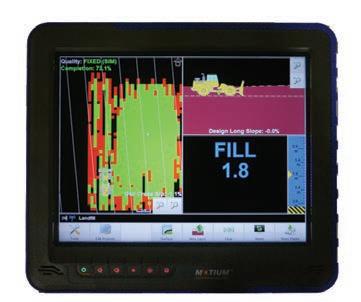

On average, Australians use 130 kilograms of plastic per person each year but less than 12 per cent of that’s recycled, according to WWF-Australia.
One of the key planks of the National Waste Plan is to phase out problematic and unnecessary plastic by 2025 and increase the use of recycled content.
Taking a whole of supply chain approach, the priority of the Summerhill MRF will be to improve the quality of plastic, glass, paper/card and metals through primary sorting. The council is also hoping to partner with manufacturers to reuse the sorted materials.
For more information, visit: www.newcastle.nsw.gov.au


In March 2023, New South Wales’ Return and Earn container deposit scheme reached a milestone of nine billion bottles and cans returned for recycling through its return point network.
The milestone came three months after the scheme celebrated its fifth birthday and just six months after it celebrated eight billion containers returned.
Danielle Smalley, Chief Executive Officer of Exchange for Change, says it’s a phenomenal success story for the people of New South Wales.
“Return and Earn is a leading example of how government, industry and the community can together fundamentally change behaviours and achieve tangible and positive outcomes for our environment. It’s also contributed to our growing domestic circular economy,” Danielle says.
Return and Earn launched in December 2017 and is delivered in partnership between the NSW Environment Protection Authority, scheme coordinator Exchange for Change and network operator TOMRA Cleanaway. The scheme is funded by the beverage industry and operates on a cost-recovery basis, providing a case study of a successful product stewardship scheme.
In five years, it has achieved some significant milestones including a 54 per cent reduction in drink container litter compared to pre-scheme levels and raising $42 million for charities and community groups via donations and fees from hosting return points.
“It’s hard to visualise what nine billion bottles, cans and cartons looks like. What is easy to understand is that it equates to $900 million in container refunds back
in the hands of the community – helping families and individuals with day-to-day expenses,” Danielle says.
“Heading to your local return point has become a routine part of life in NSW, driven by high levels of community support and trust in the scheme and convenient access.
“It’s humbling to know that Return and Earn is well-loved. Eighty-two per cent of people in NSW have participated and independent research found 89 per cent of residents support the scheme. We’re incredibly proud of these results.”
Danielle says a key feature of Return and Earn’s success is its network of more than 600 return points across NSW, managed by network operator TOMRA Cleanaway.
The mix of return points includes reverse vending machines, reverse vending centres, automated depots, and over-thecounter return points.
State-of-the-art technology and realtime data ensures integrity, uninterrupted access to return points and seamless collection. This is backed by high-tech sorting and processing infrastructure which again ensures consistent, clean feedstock for reprocessing into new containers.
James Dorney, Chief Executive Officer of TOMRA Cleanaway, says Return and Earn has harnessed the potential of recycling with a proven record of success.
“The clean and reliable stream of material produced by the scheme is in high demand and is supporting our domestic recycling industry,” James says. “In fact, 100 per cent of glass and plastic
containers collected through the network are reprocessed into new containers and other food grade packaging right here in Australia.”
Return and Earn’s success contributed to the opening of Australia’s largest PET recycling facility, Circular Plastics Australia, in Albury in March 2022. A joint venture between Pact Group, Cleanaway Waste Management Ltd, Asahi Beverages and Coca-Cola Europacific Partners, the $45 million facility takes almost all Return and Earn PET containers collected through the network and turns them into high value plastic pellets for use in creating new bottles and packaging.
“The Circular Plastics Australia facility is an example of how Return and Earn is boosting the circular economy in NSW and contributing to the creation of local new reprocessing facilities,” James says. “And the NSW public is responding, with three out of four residents believing Return and Earn is a scheme they can trust in the long run.”

The environmental benefits of Return and Earn are sizeable. No less significant, but perhaps less well known, are the social benefits that flow from the scheme.
“Every year, we see and hear more and more examples of organisations,
community groups, charities and even individuals using the scheme as a key funding stream to support their important outreach work in the community,” Danielle says.
“Examples such as the Hornsby Ku-ring-gai Women’s Shelter that raised more than $10,000 to support vulnerable women and children escaping domestic violence and homelessness; $122,540 raised in just six months for the Starlight Children’s Foundation to help brighten the lives of sick children, and workers from Snowy Hydro 2.0 who raised $12,000 to support Riding for the Disabled NSW and the Kosciusko Huts Association.”
A joint venture of five of Australia’s biggest beverage companies, Exchange for Change is responsible for co-ordinating, administering and promoting the scheme.
In December 2022 it launched a new campaign – “It feels good to Return and Earn” – in support of the hundreds of charities using the scheme and to encourage more donations.
“Return and Earn has provided an unprecedented new fundraising opportunity. There are thousands of stories in NSW that show how people are using the scheme to transform a simple drink container into a valuable commodity with
the value of the 10 cent refund multiplied many times over and making a positive difference to individuals, communities and the state,” says Danielle.
The return point network also provides opportunities for job creation for social enterprises that set up automated depots or who benefit from return point hosting fees.
St Vincent de Paul Society of NSW operates eight bulk-processing automated depots across the state in partnership with TOMRA Cleanaway. Vinnies’ involvement in the scheme has created more than 30 extra jobs, many of these in regional areas, training opportunities for disadvantaged people and a new revenue stream to fund its community work.
“We’re incredibly proud to partner with organisations like Vinnies, Valmar Support Services in Snowy Valley, Resource Recovery Australia on the midnorth coast and REDI.E in Wilcannia to provide jobs opportunities for people experiencing barriers to employment in both regional NSW and metro Sydney,” says James.
He says the potential of the scheme to further boost the circular economy is likely with the NSW Government consulting on the proposed expansion of the scheme in late 2022 to include more types of beverage containers.
In the meantime, Exchange for Change and TOMRA Cleanaway are focused on building on the scheme’s achievements and ensuring that next milestone isn’t far away.
“The success of Return and Earn wouldn’t be possible without the support of the beverage industry who fund the scheme, the waste and resource recovery industry who ensure containers are collected and recycled, and the 82 per cent of NSW who have participated, ensuring their bottles, cans and cartons don’t end up as litter or landfill,” Danielle says.
For more information, visit: www.returnandearn.org.au
The National Waste Policy Action Plan sets targets to reduce total waste generated in Australia by 10 per cent per person by 2030 and halve organic waste sent to landfill by 2030.
A key initiative to reach these goals is the introduction of a food organics garden organics (FOGO) service.
According to the Department of Climate Change, Energy, the Environment and Water, 74 per cent of Australians already have access to an organic waste kerbside collection and about 32 per cent have access to a FOGO collection. The Victorian government aims to roll out FOGO statewide by the end of 2030.

The City of Greater Dandenong adopted FOGO in April 2021 and, it says, hasn’t looked back.
Tony Barca, Team Leader of Waste Services at the City of Greater Dandenong, says the city’s work in the organics space is encouraging residents to be conscious of the environment when making waste management decisions.
“Before the FOGO service, food waste was going into the landfill general waste bin and ending up in landfill; this breaks down slowly and releases methane gas: a harmful greenhouse gas,” Tony says.
“This general waste is not able to be recycled into our garden waste stream, so we lose a valuable resource which could be turned into compost for use by Victorian farmers.
“FOGO also assists our community to refocus and ensure they place items in the correct bin. Council continues to manage this targeted community education program.”
Tony says that the implementation of this new system hasn’t always been easy in the City of Greater Dandenong because of a transient population and a culturally diverse community.
He says waste change behaviour education programs take time to resonate but the benefits of FOGO keep council motivated to continue encouraging locals to get on board.
“The overall community response has been positive. Council has seen a reduction in food waste being sent to landfill and although only small in
volume after nearly two years, we have been encouraged that this will increase post pandemic,” Tony says.
Currently, 84 per cent of houses in the council area have access to a FOGO service. Tony says the council has seen the volume of FOGO collected increase by about 3000 tonnes since the program was started.
The city has been working with resource recovery company, Veolia, for about two decades.
Veolia works with councils, industries, and customers to clean up, recover, recycle, and provide renewable energy and clean water to local communities.
Steven Marshall, General Manager of Resource Recovery at Veolia, says the City of Greater Dandenong’s implementation of FOGO has been unique and productive for the community.
“Food and garden organics are highly recyclable, so there is a huge amount of environmental value to be had by separating it from general waste.
“It can be challenging to shift waste behaviours, but in our experience, the best way to increase participation is to take a targeted approach, with relevant, direct messages. This is exactly what the City of Greater Dandenong did, leading to a successful implementation.”
Steven says contamination is a common roadblock for councils when FOGO is introduced, however, City of Greater Dandenong has worked hard to control the issue.
SINCE 2021, THE CITY OF GREATER DANDENONG HAS ENCOURAGED ITS RESIDENTS TO THINK GREEN AND WORK TOWARDS A MORE SUSTAINABLE COMMUNITY WITH THE INTRODUCTION OF A FOOD ORGANICS GARDEN ORGANICS (FOGO) SERVICE.
“It takes time for people to understand what can and can’t go into their bins, and when they get it wrong it’s important to re-educate. Working closely with the City of Greater Dandenong we undertook detailed contamination audits so that we could trace the areas of the municipality with contamination problems,” he says.
“We could then target those places until improvement was reached.”
Because of this targeted approach, Steven says contamination rates within the municipality have reduced.
“Over the years there have been significant improvements to both recycling rates and the contamination levels, which is a credit to the strong partnership we have with the City of Dandenong. We still keep a close eye on contamination because issues do pop up and we need to act quickly to address them so that we can recycle to the highest quality possible,” he says.
“Some common mistakes people make is to bag their FOGO. People will fill bags with the wrong things, such as recyclables or items labelled compostable, which is not correct. Glass and light
plastics are another common inbound item that shouldn’t be there. All of these items need to stay out, otherwise they will contaminate the end-product. Basically, the cleaner the inbound stream, the better the end-product will be.”
That end-product is a nutrient rich compost that can be reused by the council and community.
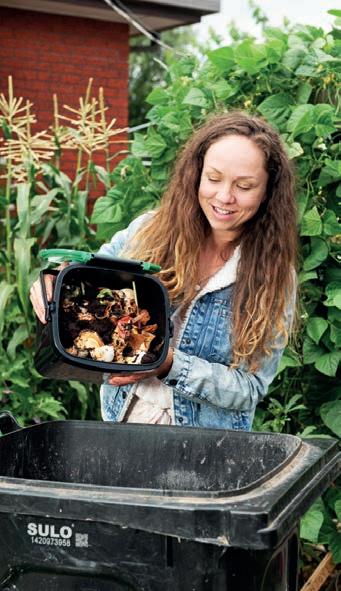
Steven says the City of Greater Dandenong uses this product to put back into the community, enhancing a circular economy outcome.
“Council is committed to circular solutions, and we are pleased that they have found many uses for the end product, which can go on to help new trees and crops grow,” he says.
“If other councils could mirror what Dandenong has done well, the environment would be in a much better position.”

The Australian Organics Recycling Association (AORA) is one of Australia’s leading recycling associations. It works to encourage its members to collaborate and brainstorm sustainability solutions within the waste management industry.
John McKew, AORA National Executive Officer, says the relationship between AORA, Veolia and City of Greater Dandenong is hard-working.
“We love to see AORA members working together. In this case, we are very happy to see the City of Greater Dandenong and Veolia tackling the industry’s biggest issue, contamination, and completing the process by buying product back,” John says.
“We encourage other local governments to work closely with their waste management providers to facilitate the best outcomes for all.”
Tony says the results of the FOGO service are in line with council’s ambition to provide a sustainable future for the municipality.
“Our goal is to ensure the community is given every opportunity to participate in FOGO,” he says.
“We want to make sure our engagement and education reaches as far as it can.”
For more information, visit: www.aora.org.au
Flexing its muscles in the Australian recycling industry for the past 30 years, conveyor belt solutions specialist Flexco is familiar with the challenges waste operations face.
With 116 years’ experience under its belt, the company has been doing some heavy lifting to ensure waste operators and recyclers stay one move ahead.
Sebastian Olguin, Flexco Heavy-Duty Specialist, says the company has focused on creating solutions that meet the sector’s ever-changing needs.
“Recycling definitely has its challenges,” he says. “The waste itself can vary from household rubbish to construction waste.
“We’ve collaborated with key players and have a level of industry knowledge where we can now help customers keep conveyor lines running for longer, reducing carryback, mistracking, belt slip, spillage, and unforeseen downtime.”
While conveyor belts in recycling facilities enable loads of waste to be transported and separated, Flexco equipment is custom engineered to ensure the belt keeps moving. It has a variety of belt cleaners, belt clamps, lifters and cutters for belt maintenance, and mechanical fasteners for long-performing splices.
Sebastian says carryback is a leading issue for waste operations, requiring frequent clean-up. It can wear conveyor components prematurely and cause other conveying problems such as belt mistracking. At every contact point on a conveyor, material can build up and eventually fall onto the floor causing disruptions to the operation.
“It doesn’t just happen at one point but will happen along the whole conveyor length,” Sebastian says.
“Some of these conveyors can be
kilometres long. You will eventually have carryback material that someone must shovel up and remove.
“Belt cleaners are an integral part of a belt conveyor system because of their ability to remove carryback which improves worker safety, increases operating efficiency and enhances productivity.”

Flexco cleaners are fitted in pairs – a primary cleaner is positioned on the head pulley to capture the bulk of the material, while a secondary cleaner goes underneath the belt to pick up the remainder.
The most common type of primary cleaners used at waste facilities are those designed with a solid one-piece polyurethane blade.
Sebastian says this style prevents large conveyed materials, such as rags, from getting caught in the belt rollers and adhering to the belt.
He says Flexco’s Y-Type Secondary cleaner is perfect for the recycling industry. It’s a one-piece blade and cushion designed to ensure there is nowhere for material to build up and cause additional issues.
Finding the right cleaner for all the varied materials being conveyed is another issue the industry faces.
“In the recycling world the material
being processed is so diverse,” Sebastian says. “In most recycling facilities the material starts off bigger and becomes finer as it is broken down. It’s critical to adapt the type of cleaner accordingly.
“Our cleaners can be custom designed by our in-house engineering team to suit the requirement of specific applications. We want to make sure that our products are working to their optimum for each customer and are the best product for the job.”
Sebastian cites a recent obstacle at a recycling facility in New South Wales where belt cleaners were wearing down too quickly.
He says Flexco did some testing and found the residue from the waste being processed was corrosive and breaking down the blade compound and being absorbed into the rubber belt.
“To combat this, we replaced the standard polyurethane blade with our food-grade polyurethane blade that is chemical resistant,” Sebastian says.
“The blade has been designed with chemical-resistant materials and stainlesssteel components that protect against corrosive environments.”
Flexco’s polyurethane blades are
produced at its headquarters in a newly expanded manufacturing facility in West Michigan. The polyurethanes were developed following testing on more than 100 various formulas to identify the best solutions for the widest range of applications.
















“After changing the blade, the New South Wales facility has seen enormous improvements in blade life and cleaning efficiency,” Sebastian says.
In another example, the homemade brush cleaners on a recycling belt at a facility that captures broken glass to make new products were not doing the job, resulting in wasted product as well as extra maintenance time needed to clean up the dangerous mess.

Once a month cleaner brush changes and housekeeping took two to four hours at a time and product loss tallied in the thousands.


A Flexco local distributor suggested that a U-Type secondary cleaner be mounted inside the chute, close to the head pulley. The product not only reduced material waste, but clean-up and maintenance costs.

Product loss was reduced, saving the company thousands of dollars, and maintenance time and manpower were cut. By all accounts, the cleaner paid for itself in less than two weeks and the facility operations manager ordered additional cleaners for other conveyors that are experiencing similar problems.
Sebastian says it’s this type of direct support that has helped the company strengthen its reputation.

Flexco Australia has a team of regional managers, engineers, and customer service representatives on-site most days assessing identified conveyor challenges and collaborating with engineers to find solutions.
With 13 locations around the world the company can also tap into a wealth of global knowledge.


“Representation and distributors in more than 150 countries makes it easier to get what customers want, when they need it,” Sebastian says.
But he says it’s no good having the right equipment if you don’t know how to use it.
Taking service to a new level, Flexco offers several training and education options for its products. Field specialists can visit sites to conduct hands-on practical training right on the conveyor, Flexco University is an online learning tool for participants to use at their own pace, or offices in Sydney and Western Australia both have fully-equipped training facilities.
For more information, visit: www.flexco.com.au


When Corey Jeffs needs a break from the office, he jumps in a Liebherr machine.
The General Manager at Knox Transfer Station, Corey ‘grew up’ in the cab of an excavator back in the day when his dad ran a local waste transfer company.
He cut his teeth as an operator in a Liebherr machine and admits to having a soft spot for them. But it’s more than sentimental value that has swayed Corey to purchase four Liebherr LH 24 M material handlers to take on the demands of a six-day-a-week operation.
“They’re big, reliable and tick all the boxes,” Corey says.
“We’ve got one machine that has racked up 10,000 hours and is still performing as new. I don’t think any other material handler would get to those hours with the work we put it through. It gets through some really tough stuff.
“We had other machines previously, but they didn’t have the longevity.”
Knox Transfer Station predominantly
handles kerbside hard waste for several Victorian councils, diverting as much as possible from landfill. It’s a big operation, churning through tonnes of hard rubbish and thousands of mattresses a day, six days a week.

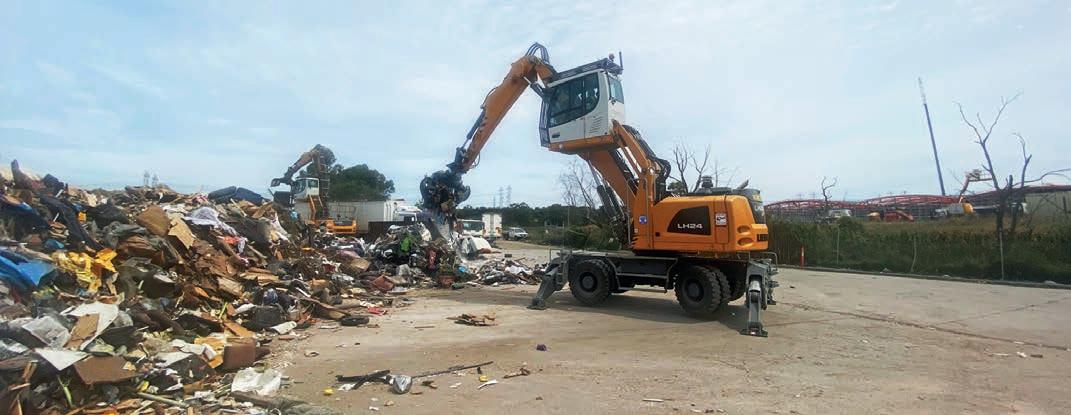
It’s punishing on machinery, but Corey says the LH 24 M weathers the storm.
“In a tough environment, strength and reliability are most important,” he says.
“Reliability is a big thing, especially for the amount that we’re doing.”
The LH 24 M is regarded in the recycling industry because of its sturdy and compact design. It’s suitable for a range of tasks from loading and unloading trucks and containers to sorting materials and waste products and piling up and moving materials.
The interaction between the hydraulics and electronics means fast and powerful movements when handling materials and at the same time sensitive and precise work for challenging sorting tasks.
Various undercarriage options are available, including one with a dozer blade to further increase machine versatility.
The Liebherr cab is designed to give the operator space and comfort to make the best possible use of the machine’s capability.
Large glass panels, different cab elevations and rear and side area monitoring give the operator an optimum view of the working area and the area around the machine at all times.
In addition, the premium driver’s seat, intuitive touchscreen colour display and central lubrication systems for the machine and its attachment, allow the driver to concentrate on what is important – the handling capacity.
“They’re a big machine but they’re really smooth,” Corey says. “These are high-lift cabs, five metres in the air. Usually in a material handler you feel every little bump when you’re that high, but these Liebherr’s are very stable in the air.
“And everything is engineered perfectly to what an operator would want. There’s nothing obstructing your view, the steering wheel has been replaced with a joystick, everything seamlessly opens and grabs.
“There’s really nowhere to mess up as an operator.”
It’s not just Corey who gives the LH
24 M a thumbs up. He says the machines already in use at Knox Transfer Station are looked after so well by operators they are “polished up like the day they arrived” and other operators are putting their hands up to get the keys to the two new machines.
Extra care from operators goes a long way to ensuring the machines go the distance, but Corey says Liebherr’s service is second to none.

The service-based machine design guarantees short servicing times, minimising maintenance costs. All the maintenance points are easily accessible due to the large, wide-opening service doors. Maintenance points are also close to each other, which means that service work can be completed quickly and efficiently.
Corey says that at a time when supply chain and labour shortages are creating

challenges for businesses, Liebherr continues to maintain servicing needs, often attending to call-outs within hours.

He says a strong working relationship with Paul Findlater, Liebherr National Business Development Manager, and Wayne Milsteed, Area Sales Manager from Earthmoving and Material Handling Division, has built trust in Liebherr.
“We’ve ordered four new material handlers within 18 months, bringing us up to six in total. That will have us sitting sweet for a long time,” Corey says. “But I wouldn’t do that if I didn’t trust and believe in the machine and the service that Liebherr-Australia offers.
“I love them, and I don’t say that about most machines. Any chance I get to be in them, I jump in.”
For more information, visit: www.liebherr.com.au




The Peterson brand was founded in 1981, making industry-changing equipment to turn low-grade organic materials into high value product.
It’s been an integral member of the Astec Industries family since 2007, harnessing a comprehensive dealer, parts, and service network.
Over the years, Komatsu Forest has invested in smart, diverse people and cutting-edge technologies. In 2009 the company recognised the need to expand its product range to meet the developing changes in the market, especially for export. After a market search the company found Peterson chippers and grinders fitted with its product mix and market strategies.
The timing proved right as Peterson was also looking for a distributor in the forest and green waste markets to take it to the next level in Australia. A dealer agreement was signed on 1 October 2010.
Brett Jones, Managing Director of Komatsu Forest, says the partnership has proven successful from the beginning.
“The Peterson products have a strong following,” Brett says. “So much so that there are just a few grinder production slots left in 2023 while chippers are sold out until 2024.”
Komatsu Forest has been successful in selling a broad range of Peterson Horizontal grinders in Australia, from 455 to 1200 horsepower (339–894 kW), in both diesel and electric applications. The most popular model is the 2710D – with more than 20 units operating throughout the country.

Brett says the Peterson 2710D is designed for operations requiring mobility,

high production, and frequent moves between jobs.
The Australian version draws its power from a Caterpillar Tier II C18 570kW (765 hp) engine and the feed opening is one of the largest in its class.
“The 2710’s large feed opening allows it to manage a range of materials,” Brett says. “Measuring 153 x 81 centimetres, when boosted by Peterson’s high-lift feed roll, the maximum lift is 11 centimetres.


“This is followed by Peterson’s powerful upturn three-stage grinding process for better material fracturing and a consistent product that ensures the required product can always be produced.”
Brett says Peterson grinders feature upturning rotors that are configured to produce lighter mulches with fewer fines. The upturning rotors perform more of the reduction process through shearing and cleavage fractures in the wood. He says that because less energy is used, they’re more productive.
Peterson’s patented Impact Release System air bags also provide uniform grinding and protection from contaminated feedstock. There’s a second line of defence of urethane cushions and shear pins that help protect the mill from catastrophic damage in the event of impact from contaminants in the feedstock.
Brett says the features add up to quality product at the lowest cost per tonne.
“The Peterson 2710D provides a difference in profitability at the end of the year with less downtime, lower fuel consumption, lower colorant cost, and higher mulch yields,” he says. “It produces the highest quality product at the lowest cost per tonne.”
Komatsu Forest Pty Ltd is located at Newington, Sydney, with branches and agents throughout the Australian forest regions.
For more information, visit: www.komatsuforest.com.au
MAKING A NAME FOR ITSELF IN AUSTRALIA’S ORGANICS AND FORESTRY RECYCLING INDUSTRIES.



Inside Construction Expo will deliver


Targeted messaging in over 19 industry-leading publications that reach more than 80,000 decision makers across multiple sectors
Digital communications to 28,000+ engaged readers
Premium networking opportunity with industry leaders at the Foundation Awards gala dinner
insideconstructionexpo.com.au
EXHIBITION SPACE NOW ON SALE

Despite the urgency for change in Australia’s resource recovery system, the 2022 National Waste Report showed that the nation is moving backwards.
The national waste plan aims to reduce the total waste generated by 10 per cent per person by 2030, however Australia’s waste production has increased by 2.48 tonnes per person, according to the report.

The 2023 Australian Waste and Recycling Expo (AWRE) summit is set to provide a wake-up call for the system.

The full-day summit will bring together industry, government and waste experts to discuss the roadblocks hindering investment, how to fix resource recovery and infrastructure challenges.
The summit is hosted by the National Waste and Recycling Industry Council (NWRIC), the Waste Contractors and Recyclers Association (WCRA) and the Australian Council of Recycling (ACOR).
Suzanne Toumbourou, Chief Executive Officer at ACOR, says it will be a valuable forum for industry.
“Being able to engage with the people in the sector, to exchange ideas and to learn more about what’s being done is the kind of brainstorming that only happens when you’re able to engage in person,” Suzanne says.
“It’s exciting to see the depth of expertise, the excellence of the industry and the innovation continuously growing.”
The theme ‘Australia’s Reality Check –Recycling & Residuals’ provides the basis of discussion for the day.
Tony Khoury, Executive Director of WCRA in New South Wales says the summit is an opportunity to highlight the
issues that need to be addressed by state, territory, and federal regulators for there to be sustainable waste management and resource recovery outcomes.
Rick Ralph, Chief Executive Officer for NWRIC agrees. He believes the conversation around how the nation intends to manage its long-term waste generated by a growing economy has been stopped, but is one that should continue.
“Australia is facing unprecedented risks in terms of how it will manage, long term, its residuals from the waste the nation is generating,” Rick says.
He cites a business environment where the licencing or planning of facilities can take more than seven years before construction even occurs, or the development is stopped by community challenges to the courts, and limited policy settings that encourage the nation to embrace waste-to-energy technologies, as examples of roadblocks.
“The AWRE 2023 Summit will present on these risks and provide industry insights and solutions in which the opportunities governments and communities more broadly aspire to achieve, can be met.”
The Department of Climate Change, Energy, the Environment and Water (DCCEEW) has seven ambitious targets outlined in the National Waste Policy, addressing the current hurdles for the nation’s waste management. It includes achieving an 80 per cent average recovery rate from all waste streams by 2030 and phasing out problematic and unnecessary plastics by 2025.
Suzanne says there is evident commitment from across the supply chain to achieve these targets relating to waste reduction, recycling, packaging, and the circular economy. What’s missing is some of the fundamental underpinnings for change, starting with the distinction between waste and recovered resources.
She says that given Australia hasn’t delivered the systems-wide change that is needed to achieve the resource recovery targets or move more closely towards them, it would’ve been against-the-odds for the numbers to be moving forward.
To progress, she says four key challenges need to be addressed.
“The first is a regulatory environment. Our environmental protection regulation is not aligned with circular economy
outcomes. There is an over emphasis on managing pollution or risk and a lack of balance and emphasis in industry development,” Suzanne says.
“Second is end markets. Recycling is a system. The system is comprised of three things: collection, processing, and markets. If one of those things doesn’t work, the whole system doesn’t work. We absolutely need to be able to collect and aggregate in a scaled way, the type of infrastructure that can source, reprocess, and remanufacture is also needed. Without end markets, recycling can’t work.
“The next priority that needs progress to move resource recovery forward is product stewardship. It’s a real responsibility by producers over what they put into the supply chain, what we end up with and what we’re able to recover and recycle.”


Suzanne says the right behaviours
in the community are also needed for progress. The fourth priority is the need for businesses and individuals who recycle correctly.
“As soon as you put the wrong waste in the wrong bins, you end up with contamination for the recycling sector,” she says. “The material doesn’t go where it needs to and does not get recycled. So, recycling right is a priority.”
Suzanne hopes the summit will result in a consensus on action to be taken.
“With the reality check about where the nation is sitting right now, hopefully, we can find a shared consensus about the next step,” she says. “Ideally, when it comes to the results of the next national waste report, my aim is that in future we’ll see a national resource recovery and recycling report, separate and distinct.
“We’ll see some much better metrics
out of further iterations. This kind of dialogue can help us move towards our resource recovery, packaging and waste reduction targets.”
AWRE 2023 will be from 26-27 July at the International Convention and Exhibition Centre, Sydney. The summit will run in the same location on 26 July.
The 2023 expo will see the return of the innovation zone for exhibitors to pitch waste solutions and the AORA organic zone. It will also introduce a new recycled zone focused on innovative products made from recycled or repurposed material.


Ticket information and a full program will be released in coming weeks.
For more information, visit: www.awre.com.au
lake surrounds. Reducing the amount of water bottles that need to be sold, and having people bring their own, is a great win for water conservation and the waste reduction strategy.”
Lake Macquarie City Council was one of the first councils in the Hunter region of New South Wales to adopt food organic, garden organic (FOGO) collection bins. The program has been running successfully for several years and is now producing organic compost used in local landscaping supply and horticulture.
The council also has plans for several community recycling centres. For now, Daniel says, plans are underway to roll out more water stations, each of which features a water bottle refill tap and a dog water bowl.

More than 120,000 water bottles have been saved from landfill over the past two years thanks to water stations at key locations across Lake Macquarie.

Lake Macquarie City Council partnered with Hunter Water in 2020 to install the stations at five high-traffic spots. Daniel Hartin, Council’s Co-ordinator Asset Optimisation, says those five stations have supplied more than 72,000 litres of drinking water to users in the two years since.
“That’s the equivalent of more than 120,000 plastic bottles’ worth of water,”
he says. “Simple initiatives like this play an important role in reducing single-use plastics, as well as reinforcing the ‘Love Water’ messaging that helped get us through the most recent drought.”
Laid end-to-end, those bottles would stretch 17 kilometres.
Daniel says the water stations form part of a broader council focus on the circular economy and waste reduction strategies.
“A lot of that is based around soft plastics,” he says, “and being able to not have plastics littering the area. Our community tells us that what they love about the area is Lake Macquarie and the
“We’re seeking input from the community about where those new stations could go,” he says. “The idea is to target busy locations where people are outdoors exercising and need to rehydrate.”
Laura Hails, Hunter Water Executive Manager says Hunter Water is proud to partner with council on this initiative.
“These water stations are helping our community make smart water choices every day,” she says. “Water is fundamental to life and by managing this precious resource sustainably, we can ensure the health and wellbeing of our community and environment.”
The initiative has further strengthened the ongoing collaboration between
Hunter Water and the council on water conservation.
In 2022, the two organisations launched a joint project to irrigate sports grounds at Edgeworth and Cameron Park with 20 megalitres of recycled water – enough to fill eight Olympic-sized swimming pools.

“This investment will ensure the playing fields can be used year-round and helps improve the resilience of beautiful assets that are important to the community,” Laura says.
Edgeworth Sporting Complex includes several ovals while Cameron Park has a large multi-purpose oval, playground, netball courts and BMX track.
Daniel says irrigation work is complete and the council is hopeful recycled water from the Edgeworth Wastewater Treatment Plant can be used at the complexes within the next 12 months.
“Sporting fields are council’s largest
water consuming asset,” he says.
“Any opportunity we have to increase the use of recycled water and not potable water is a win for the community.”
The council is looking to extend the


project to other sports grounds and is looking at other efficiencies including integrated weather stations and central irrigation control systems, to control when the areas are watered.

FROM ACROSS THE AUSTRALIAN INDUSTRIALS SECTOR WOMENININDUSTRY.COM.AU/AWARDS



Celebrate the women who work tirelessly to advance the mining, engineering, road transport, logistics, rail, bulk handling, infrastructure and waste management industries.

PROUDLY PRESENTED BY
The Genox BH “Behemoth” Series Single Shaft Shredders are heavy duty, reduction machines specifically designed for shredding a wide variety of untreated waste material streams down into either coarse or medium-sized fractions. The powerful, wearresistant machine structure is well suited to demanding recycling tasks.

All BH series models feature a force-feeding ram, a high-performance rotor, classifier screen and hydraulic power unit. Six models are available to cater to a multitude of different applications.
The BH series complements existing Genox Vision, Xeno and Mino series’ of shredders, and the GranCalibur series granulators which offer defined size reduction of various materials in a single pass.



The SDLG L958F wheel loader is ideal for waste and recycling operations. Built tough with reliability and versatility in mind, and designed for easy daily access and service checks, the L958F is suitable for all types of material handling applications.
L958F wheel loader has a 3.0 cubic metre bucket capacity with a rated load capability of up to 5.4 tonnes, dump height up to 3.1m, and a 3.3m wheelbase for increased stability. Operating with a 4-speed VRT200 transmission and Deutz 7.7L 6-cylinder engine, 162kW/217hp, the L958F has the high torque and durability, along with power and fuel efficiency.

The SDLG wheel loaders feature a hydraulic quick coupler and full powered third function hydraulics as standard, which can accommodate a variety of attachments for versatility. The L958F model also includes a comfortable, airconditioned cab focused on practicality and usability, with a wraparound pillarless front and rear windscreen that provides all-round visibility. The L958F is fitted with fully certified ROPSFOPS rollover protection.
SDLG machinery has all the features and functionality for day-to-day work, and are
reliable with their low maintenance, and ease and accessibility for service. SDLG is available nationwide through CJD Equipment’s branch and dealer network.

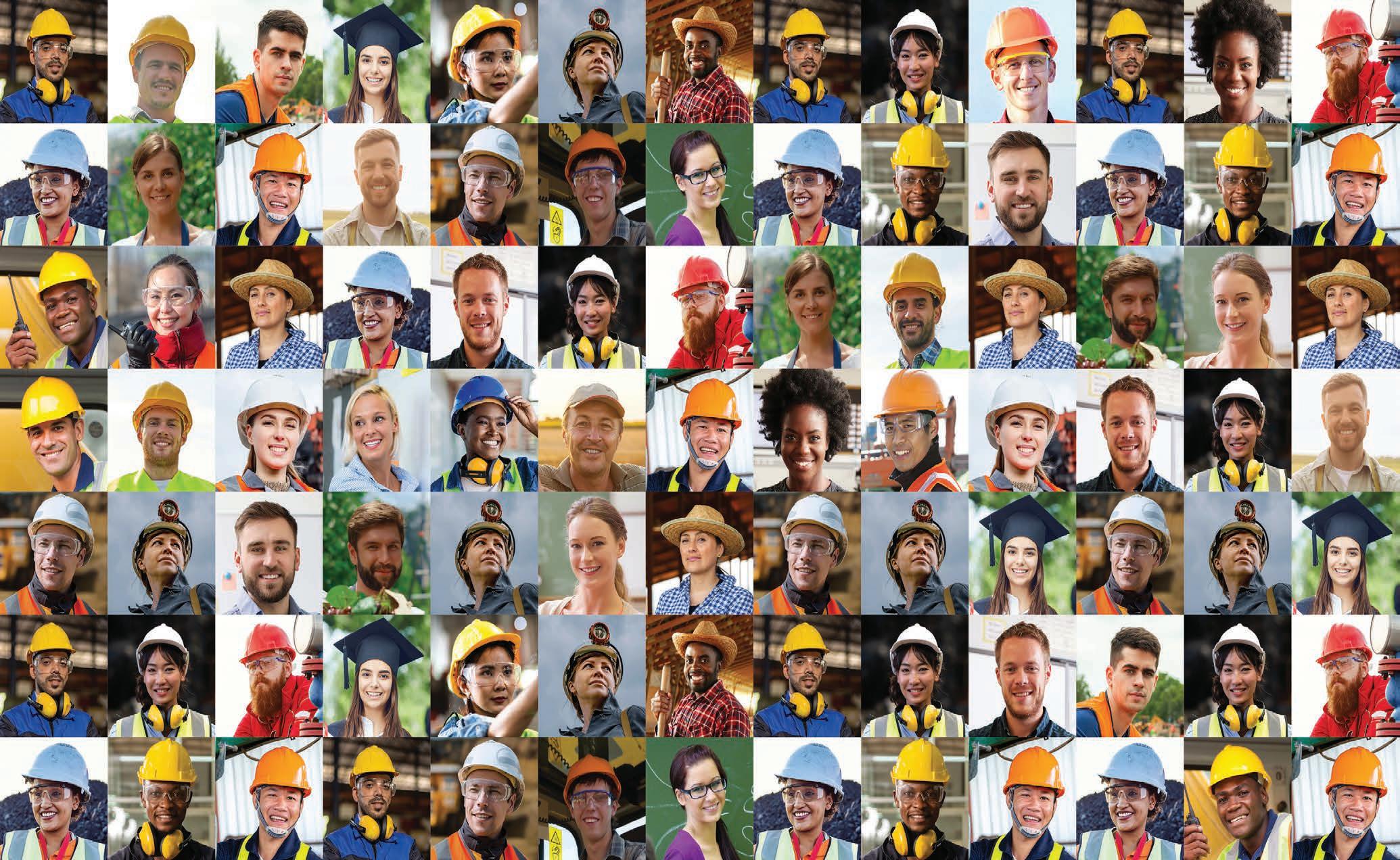

RECYCLING IS ONE LINK IN THE CIRCULAR ECONOMY – BUT IT’S THE LINK THAT CLOSES THE LOOP.
SUZANNE TOUMBOUROU, CEO OFTHE AUSTRALIAN COUNCIL OF RECYCLING, TALKS ABOUT THE IMPORTANCE OF REGULATORY SUPPORT AND END MARKETS.
recovery and create a strong and
As the leading national industry association for the recycling and resource recovery sector in Australia, the Australian Council of Recycling (ACOR), has long advocated for a circular economy where resource recovery, remanufacturing and recycling are recognised and supported as integral functions of this

However, the current regulatory framework in place for waste –and therefore resource recovery, remanufacturing and recycling – is decidedly linear. Across all jurisdictions, government departments and regulatory bodies are all too often drawing a straight line from

new product to ‘waste’ – and are not creating the environment, incentives, and end markets to turn that ‘waste’ back into new products.
The regulatory framework for waste is so fractured that recycling is presently an exception of the process, rather than the goal.

Treating all materials as (eventual) waste turns the entire process into a disposal logistics operation, rather than a resource recovery opportunity. This has led to the various environmental bodies across jurisdictions becoming more focused on mitigating risk than recycling right.
This risk mitigation creates additional burdens on recyclers, such as exorbitant financial assurances and insurance costs and is not a context in which they can operate optimally. Regulators wanting risk-free, guaranteed outcomes
that predominantly longstanding conventional processes are able to provide, leave innovators out in the cold with the barriers to entry simply too high.
While we support sensible and safe risk mitigation policies, the same risks are simply not present across all material streams within the ecosystem. The one-size-fits-most risk mitigation policies for waste does not fit all recyclers – not to mention the fact that virgin and new materials are not scrutinised under these same parameters.
We have to balance safety and efficiency and enable recovered resources to compete on a more level playing field with virgin resources. This is particularly poignant in priorities around storage.
The overarching theme that ‘stockpiling’ recoverable resources is always a dangerous practice and a betrayal of the ethos of recycling needs to be abandoned.
Storing materials is a legitimate and often necessary operational function across all manufacturing enterprises. However, the regulatory landscape that has been created in which ‘all discarded or surplus material is ‘waste’’ means that when it comes to recycling, the storage of recoverable resources is demonised, while perfectly acceptable in other adjacent industries.
We must avoid the rise of Schrodingers Stockpiles, where stored materials are arbitrarily deemed as hazardous waste – potentially condemned to landfill or progressed through the recycling system and turned into new products. The stockpiles exist in both states – waste and recoverable resources – and their final state is only decided by how rapidly it moves through the recycling pipeline.
The lack of nationally harmonised definitions of waste, recycling and
recoverable resources respectively further creates confusion, contamination and missed economic opportunities. We need a conscious uncoupling of recycling and waste management, and we must draw a definitive (regulatory) line between the two. At the very least, we need a nationally agreed definition of end-of-waste, and a nationally consistent regulatory framework and governance model that includes industry at the table.
There are three main phases in recycling: collection, processing, and end markets. Our industry cannot direct the volume and quality of the material that flows into our operations, but we can control what comes out – and there must be markets for what does.
There are currently barriers to strong market uptake of recycled material, including cost competitiveness with virgin materials and willingness within the supply chain to embrace change. The manufacturing and remanufacturing process needs more support from governments, private businesses, and consumers. This should include a legislated minimum recycled content component for all new product packaging.
Along with many others in the industry, we would like to see the 2025 National Packaging Targets designed by the Australian Packaging Covenant Organisation mandated. This would promote strong end markets by 2025, ensuring that 50 per cent of average recycled content is included in packaging, and making 100 per cent of packaging reusable, recyclable or compostable. These mandates should apply to all packaging that is sold in Australia and should be benchmarked and regularly and transparently reported on.
This level of government support for a thriving, competitive recycling market through mandated recycled content in packaging would help kick-start supply chain integration of recycled products and materials and establish robust and resilient end markets.
The recycling sector continues to face a fragmented, variable, and duplicative regulatory environment across Australia’s states and territories, which undermines investor confidence in recycling infrastructure, and public confidence in recycling overall.
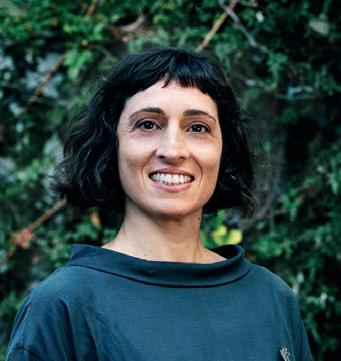
Australia’s governments must come together with industry to develop a nationally agreed definition of endof-waste, a nationally consistent regulatory framework, and a robust governance model that delivers bestpractice regulation.
Many gaps in the system resulted in a significant disruption to soft plastics recycling. We must urgently address these gaps to safeguard the sector. Recycling is just one link in the circular economy – but it’s the link that closes the loop.
Given the right regulatory support and strong end markets, recycling can supercharge the circular economy, delivering significant social, economic, and environmental value like never before.
Capable of compacting a wide range of materials including cardboard, plastic, e-waste and even metals; whatever the type of waste that needs to be baled and recycled – we’ve got the right machine for you.


The Premier Fire Prevention System

Fire Rover utilises state-of-the-art thermography and video analytics to pinpoint and detect fires in their infancy and identify hotspots before flare-ups.
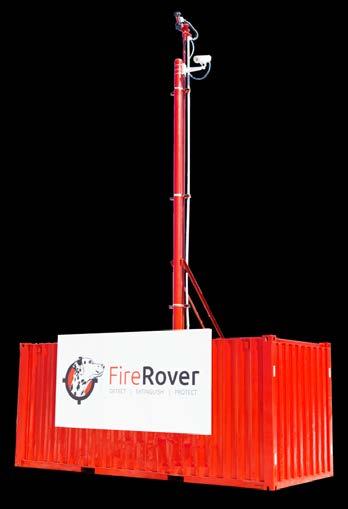
DETECT: Advanced Analytics with Human Verification

EXTINGUISH: Fire Suppression System



PROTECT: Verified Protection
The BOB hooklift range is designed and built according to your requirements. With over 30 models of hooklifts available, we can configure your equipment to fit your needs perfectly. Strength, endurance and reliability are only some of the benefits deriving from the use of our container handling systems.


Wastech Engineering provides service and support for our entire range of waste management equipment. We offer mobile breakdown services for our clients in Australia.


Wastech Engineering design, manufacturer and service a broad range of cardboard, recycling, organics and general waste compactors for supply and installation Australia wide.



This Wastech designed trailer incorporates the use of high tensile steel plate in the body, reducing tare weight and increasing payload.
McCloskey are developing smarter solutions delivering a complete line of environmental equipment; Shredders, Trommels, Screeners and Stackers to suit your industry needs.

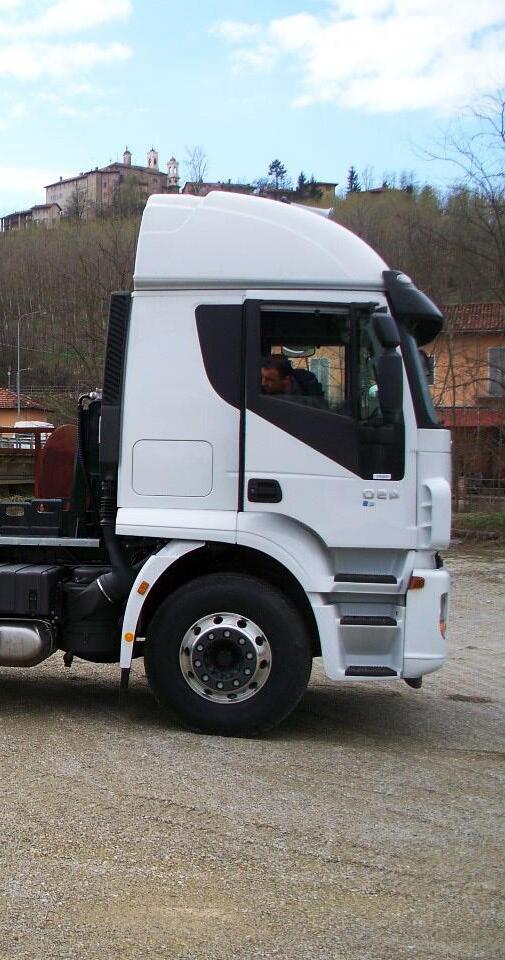

TOMORROW’S SOLUTIONS. TODAY
Since 1992, we have repurposed over 60 million tonnes of waste. We are in the business of resource recovery –transforming waste into usable products. Find out what we can do for you.
• Construction and Demolition Waste
• Commercial and Industrial Waste
• Tyre Recycling
• Energy from Waste

• Complete Material Solutions
• Circular Economy Carbon Abatement
resourceco.com.au